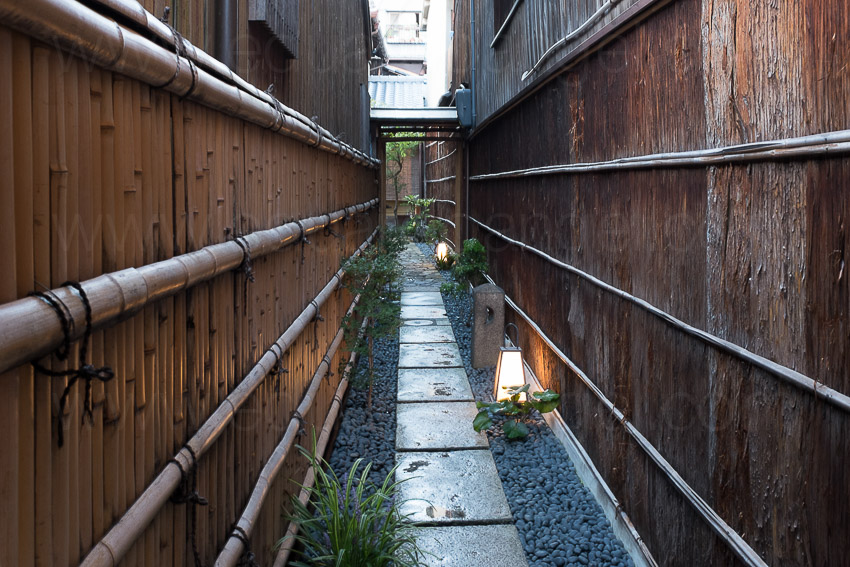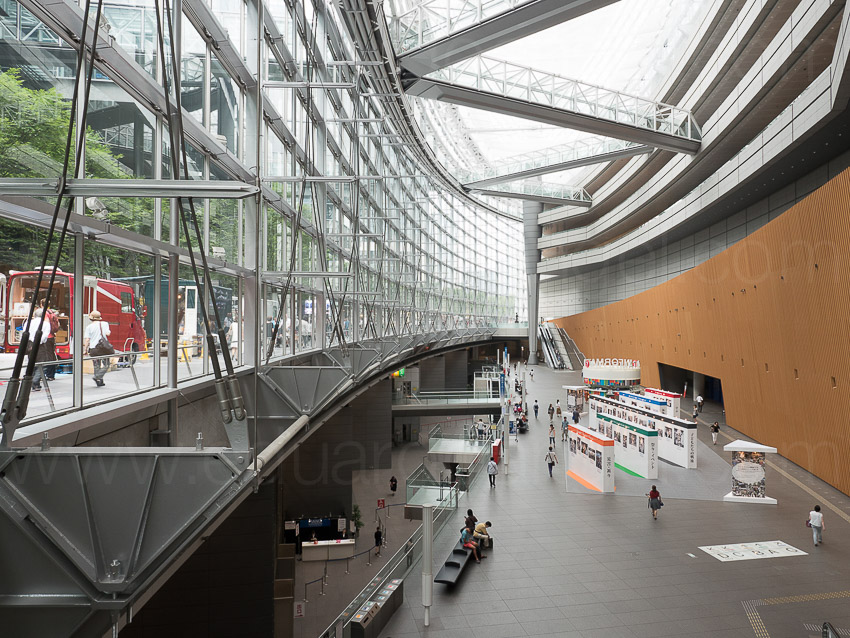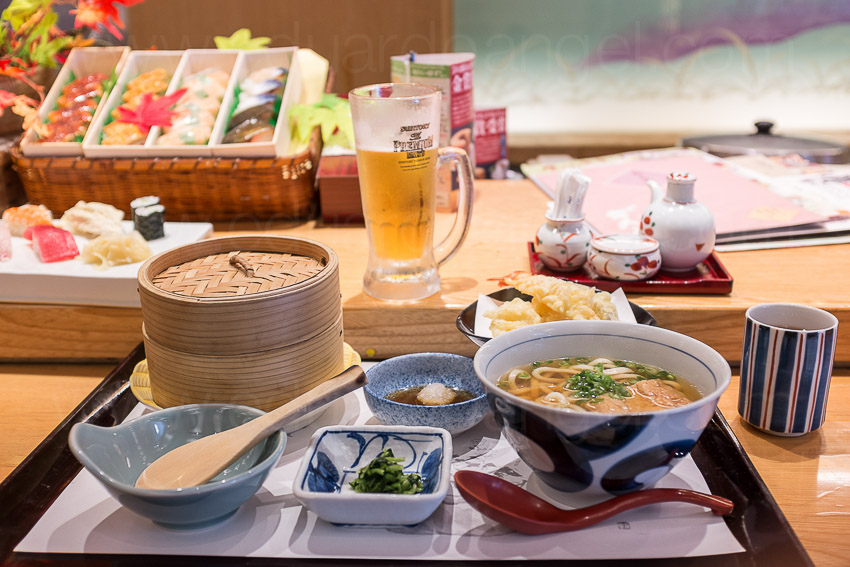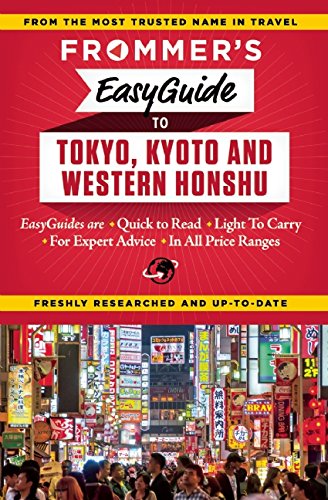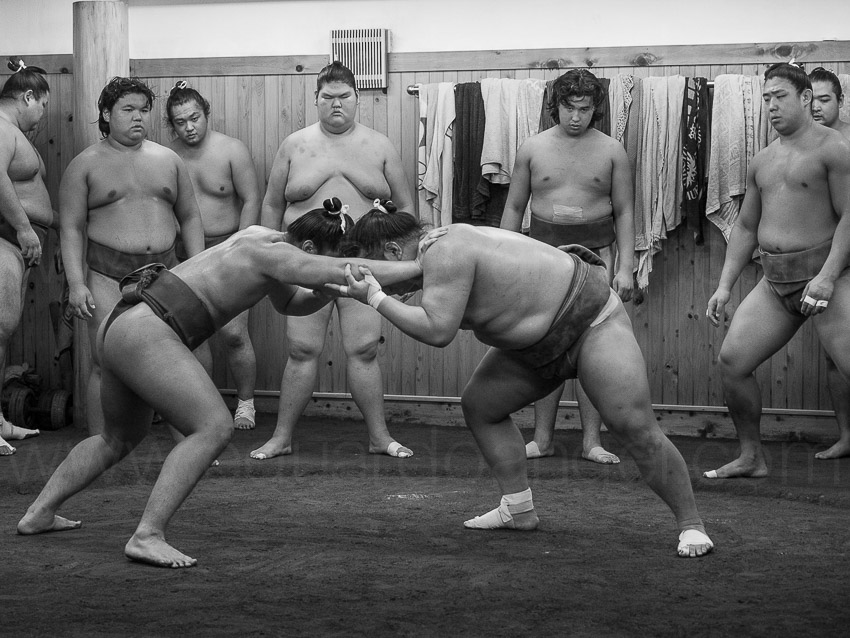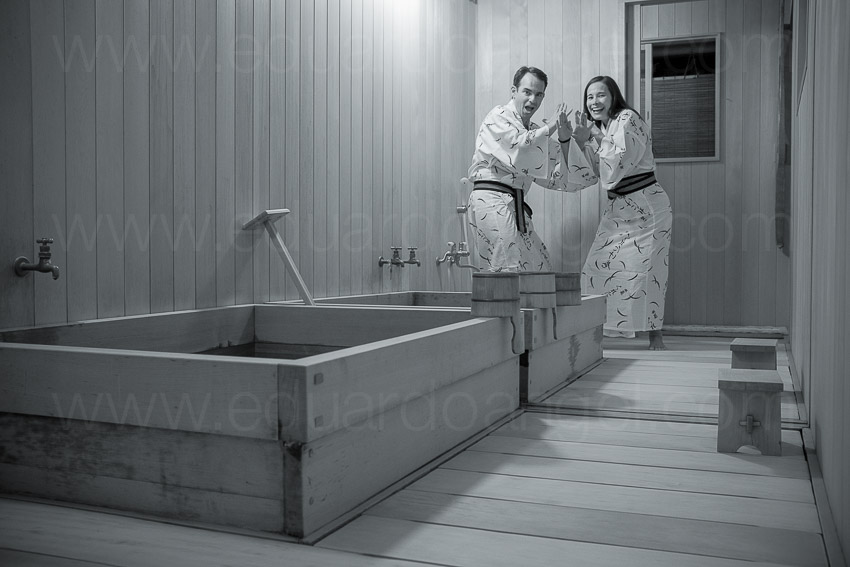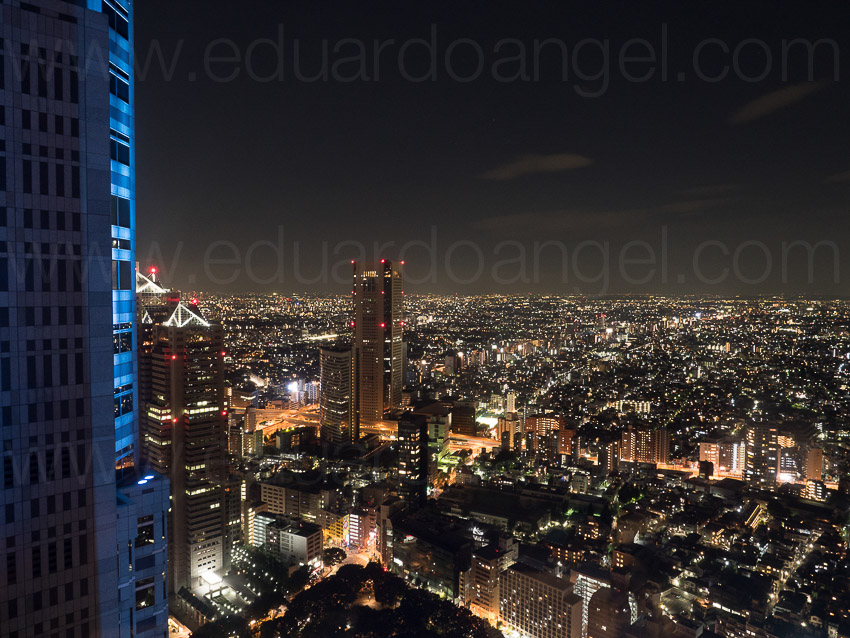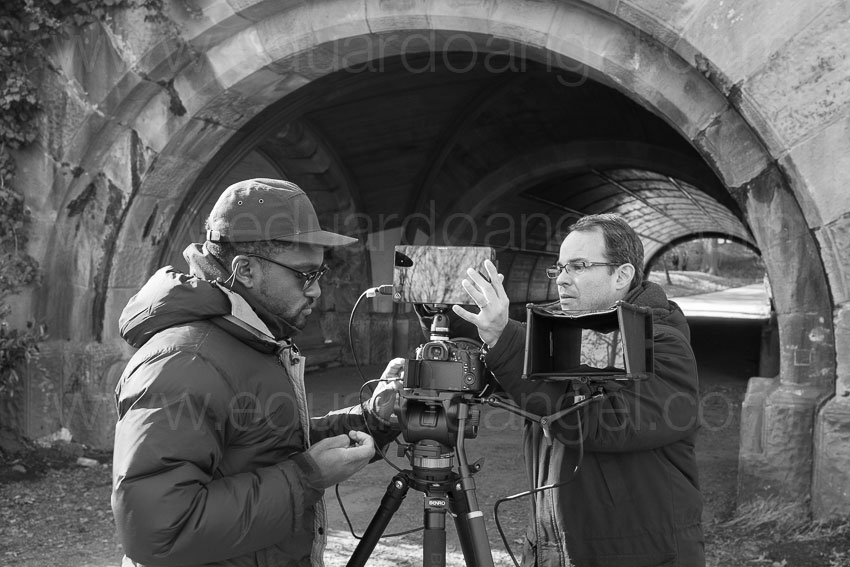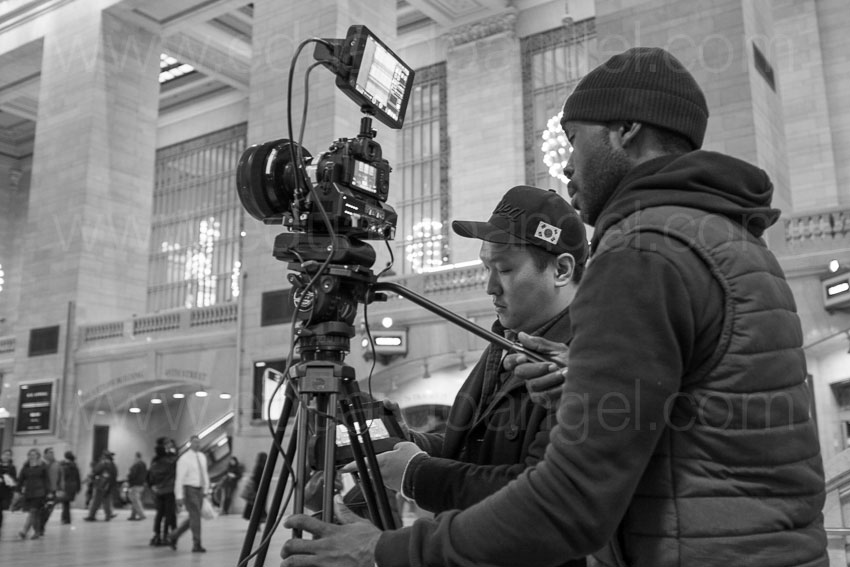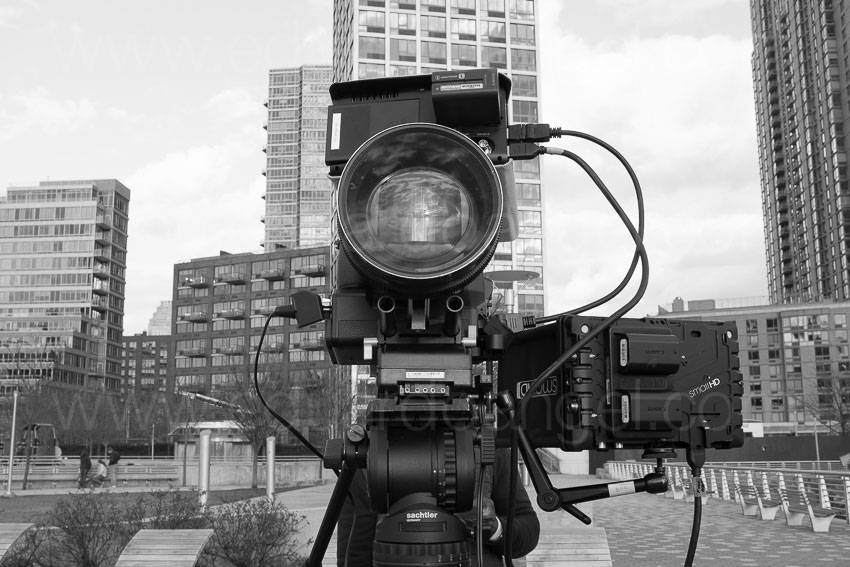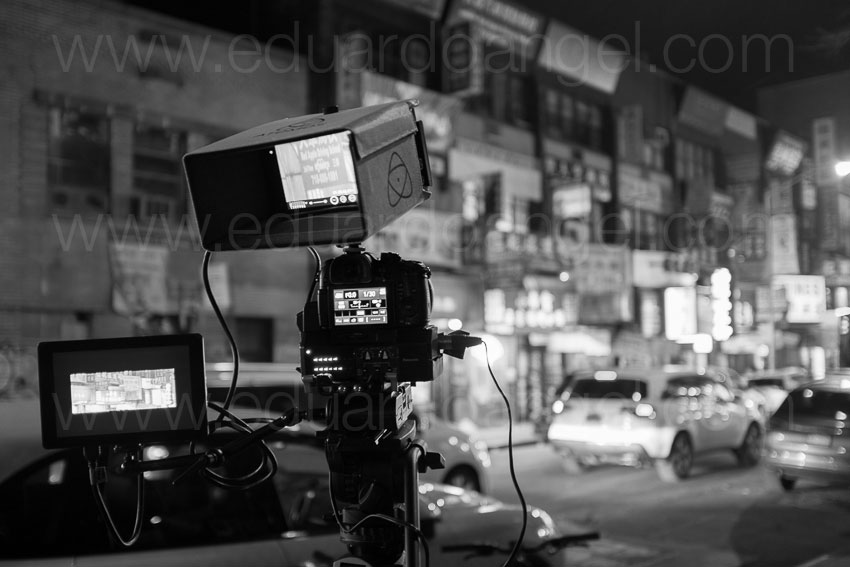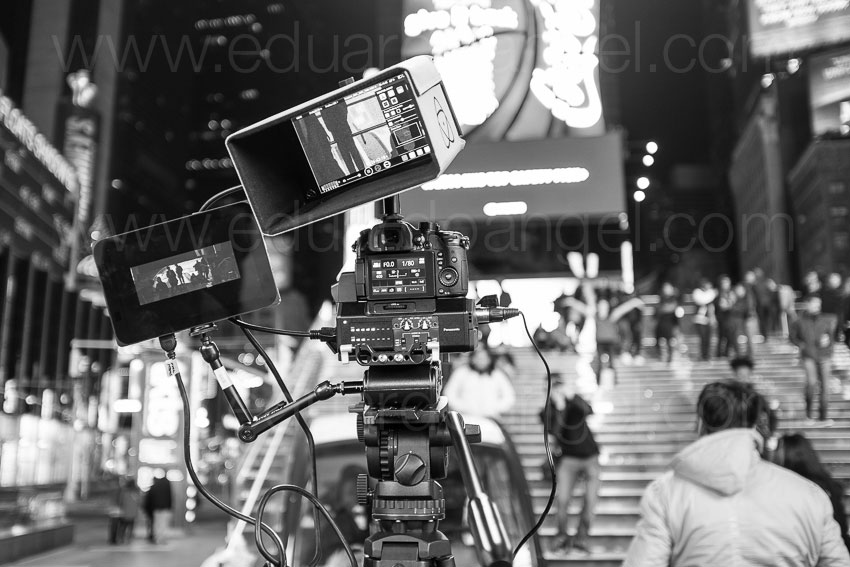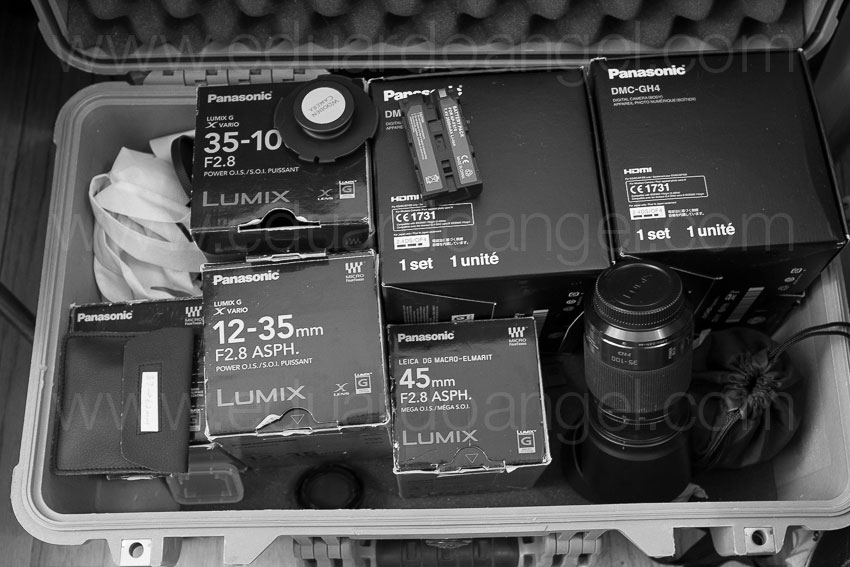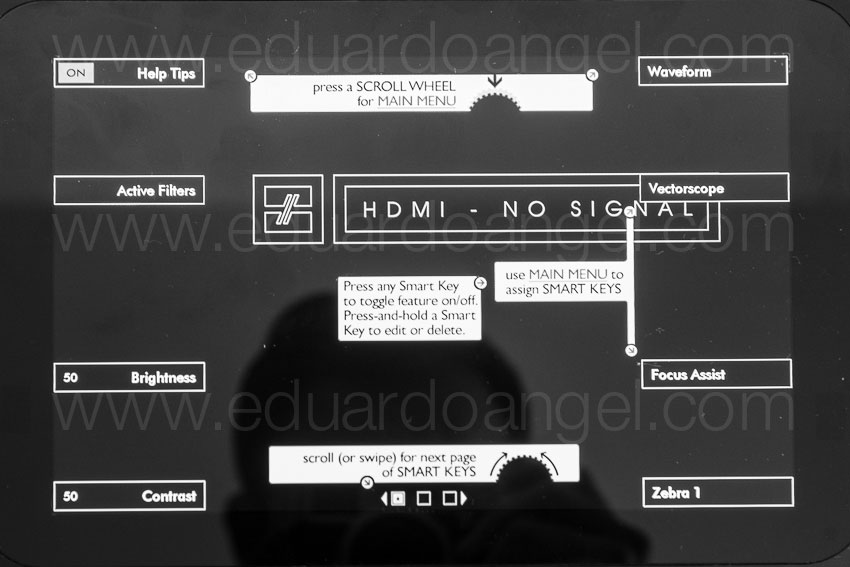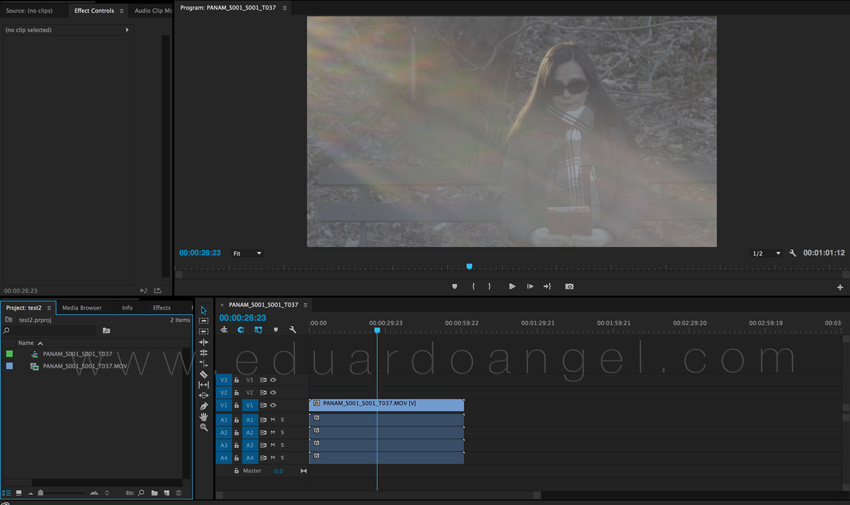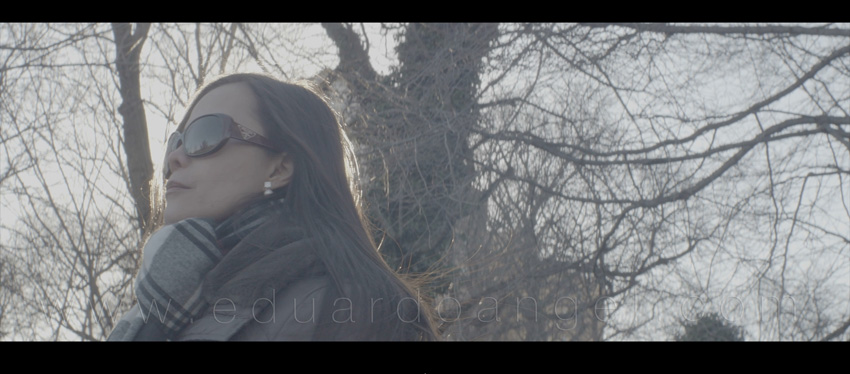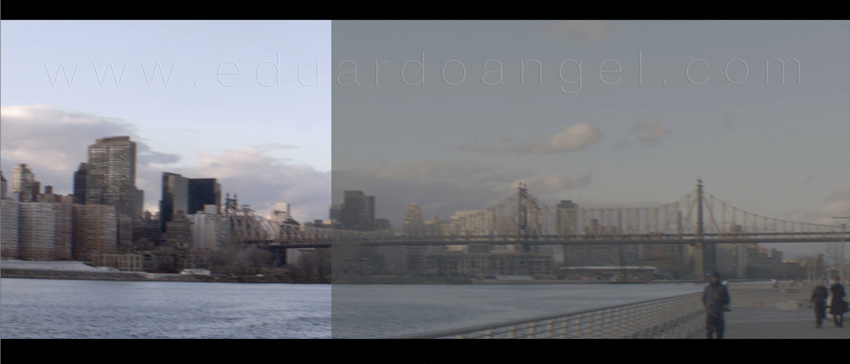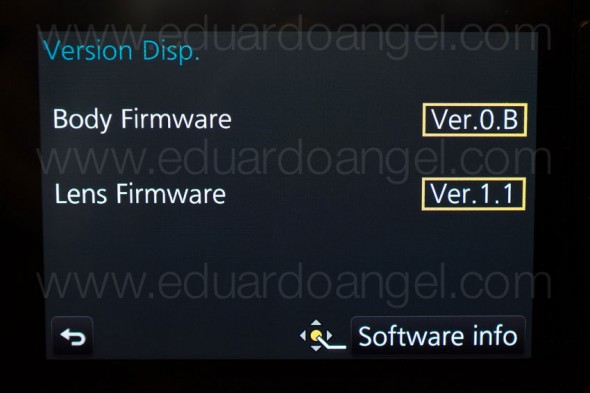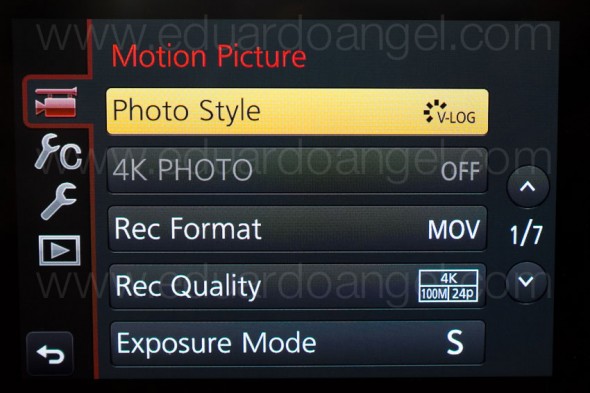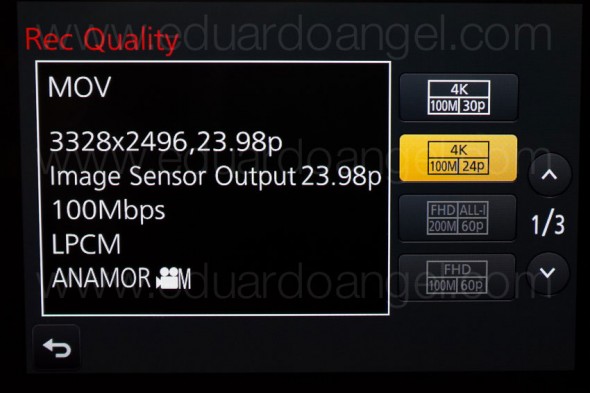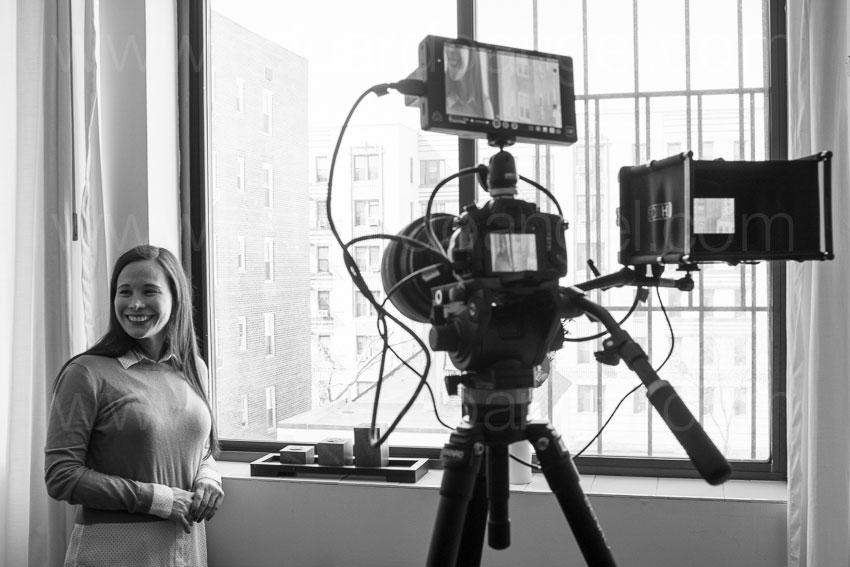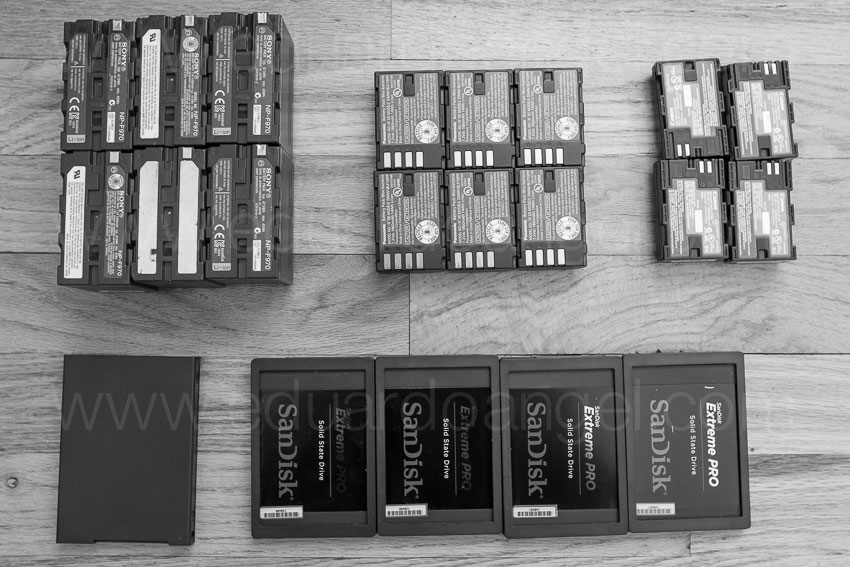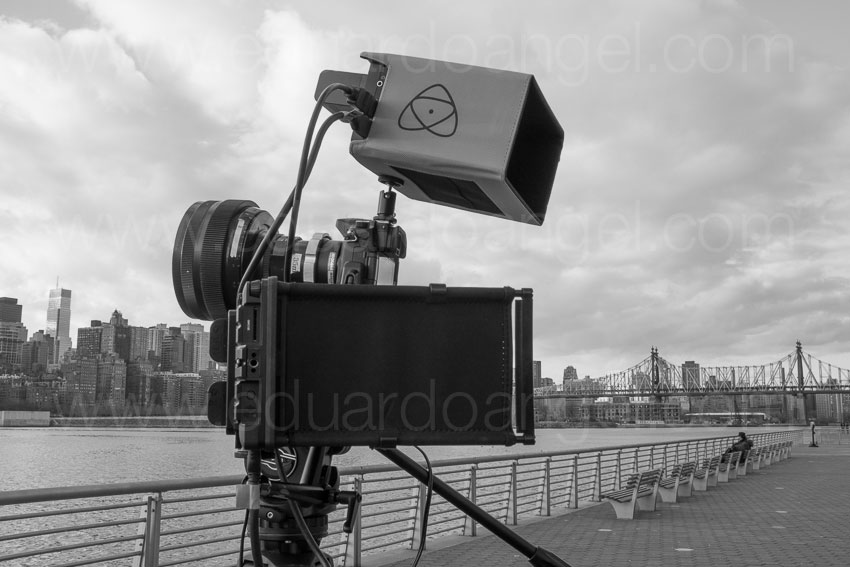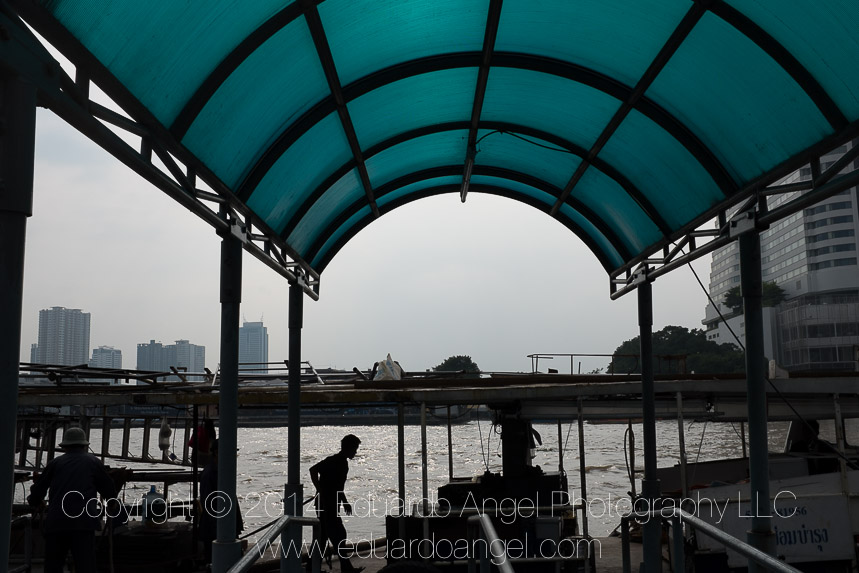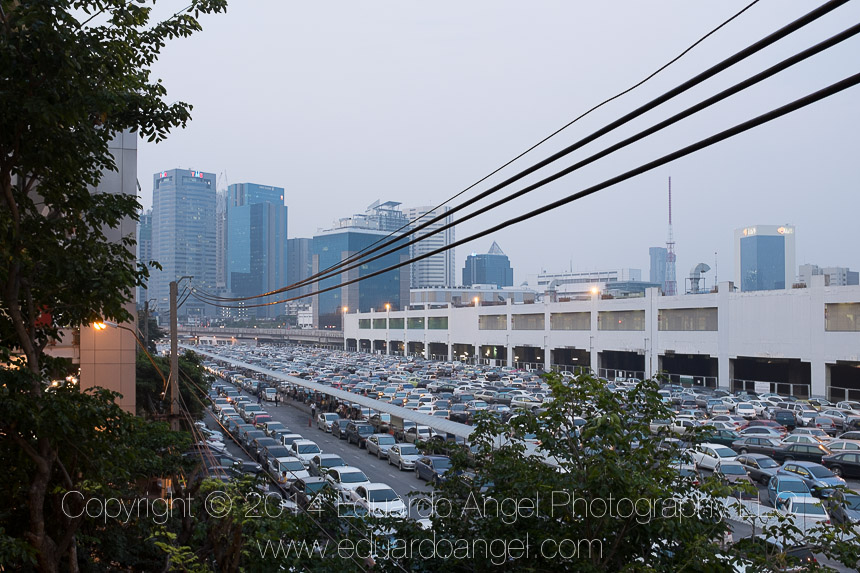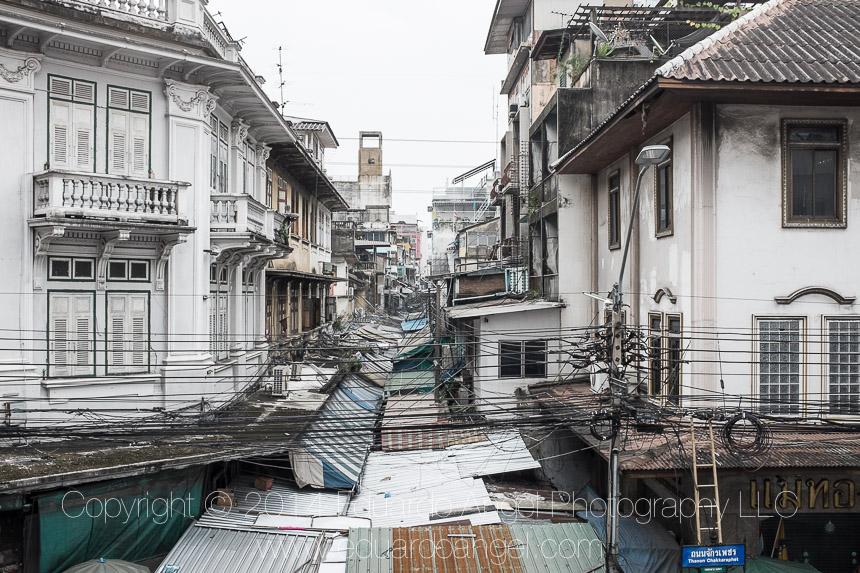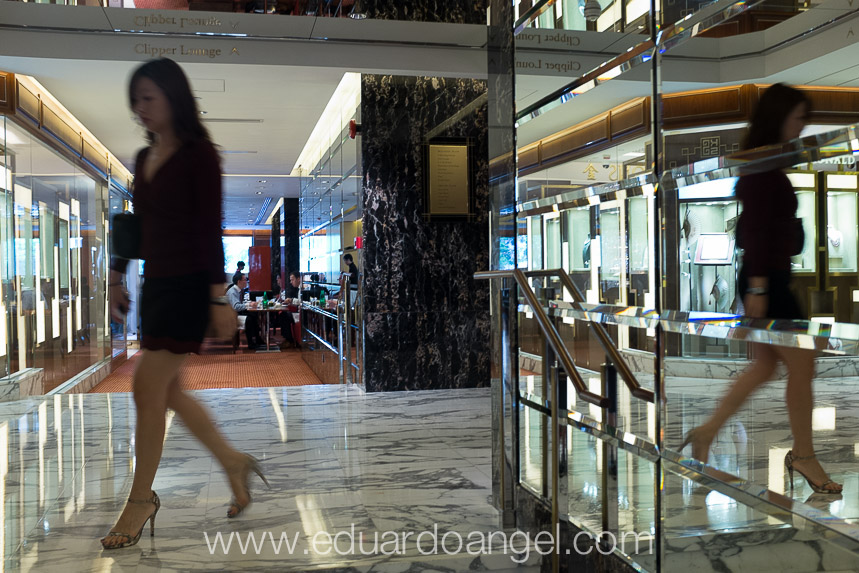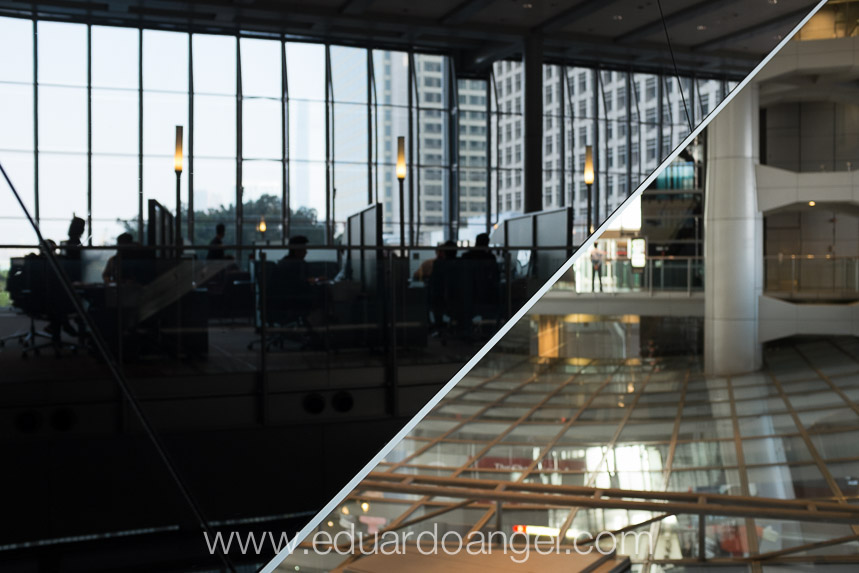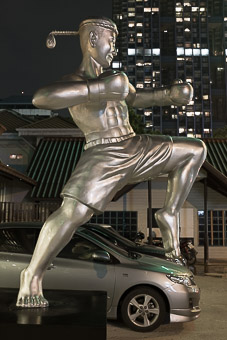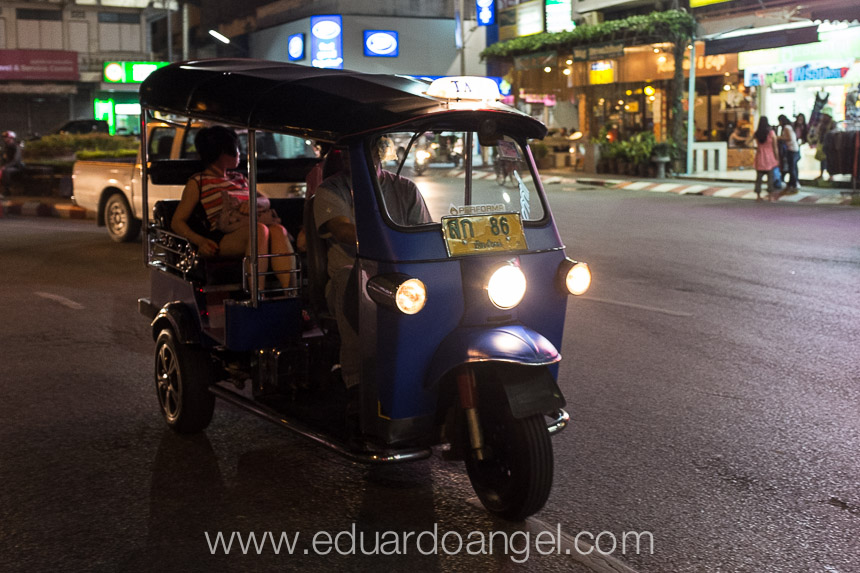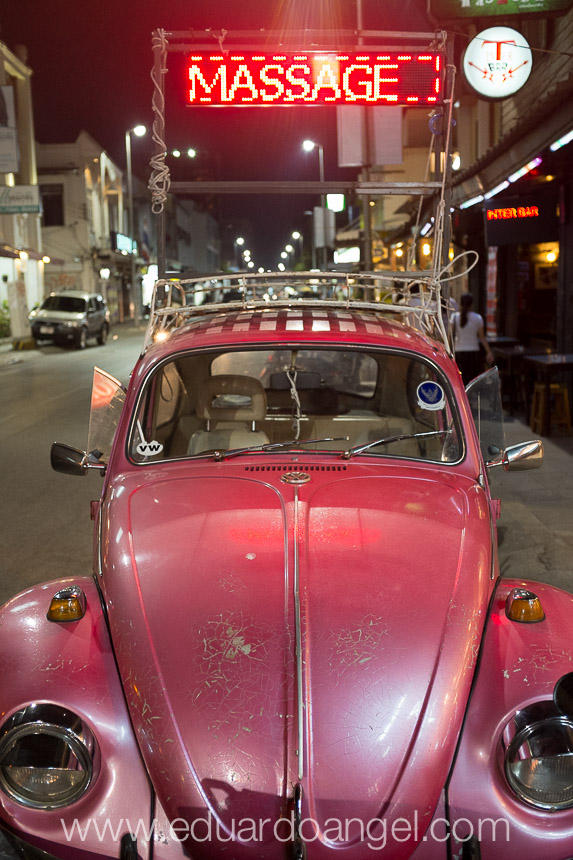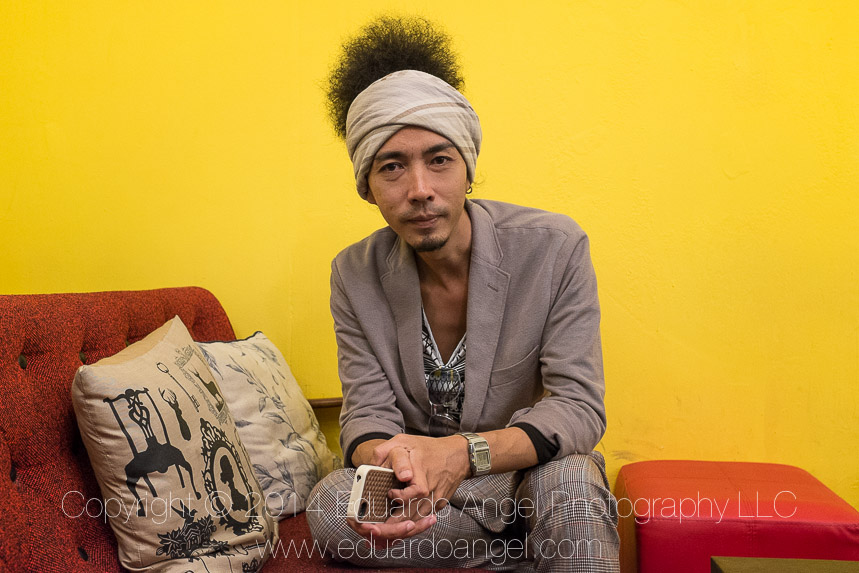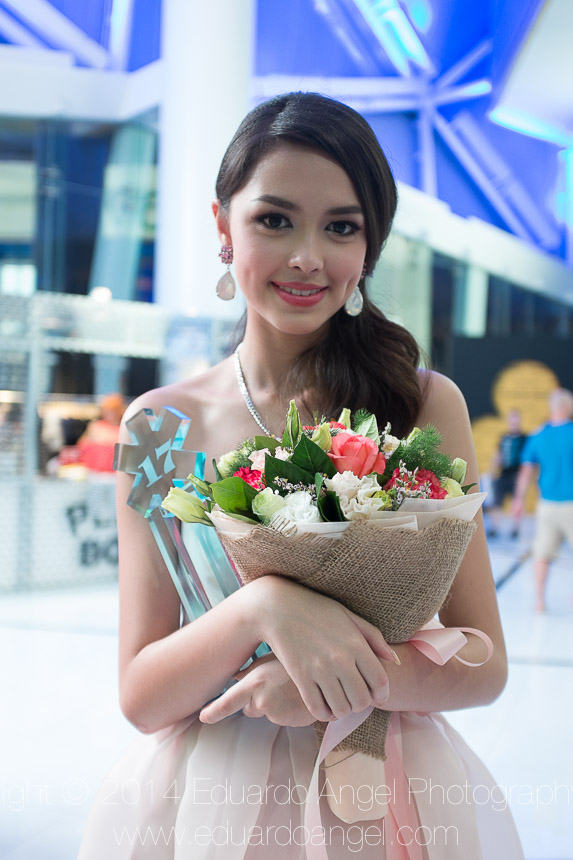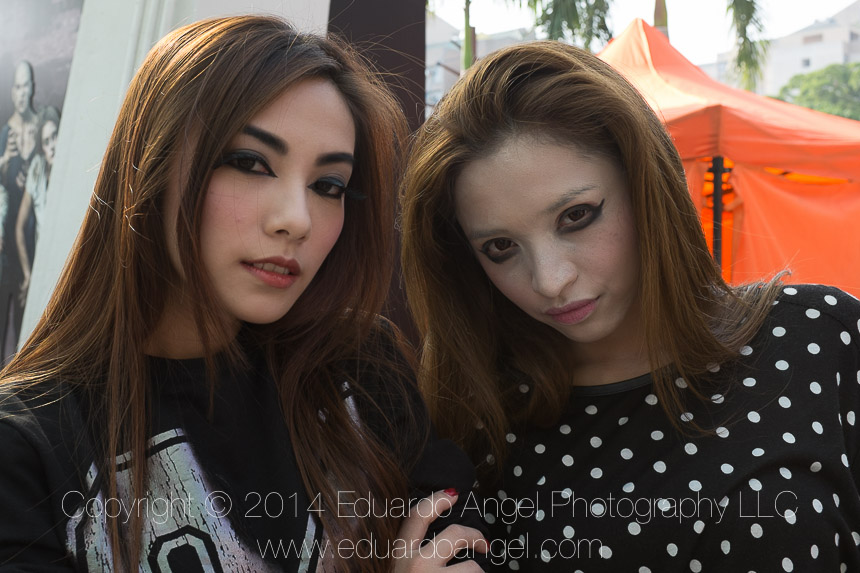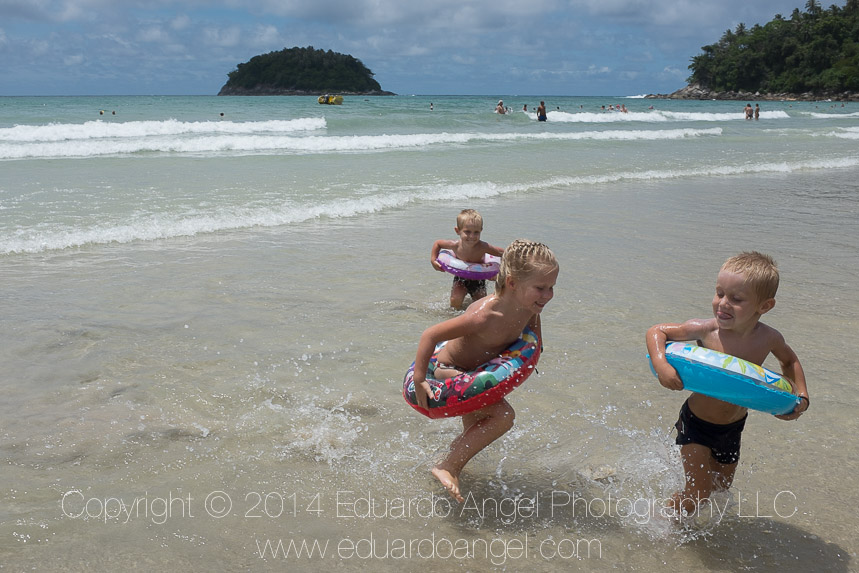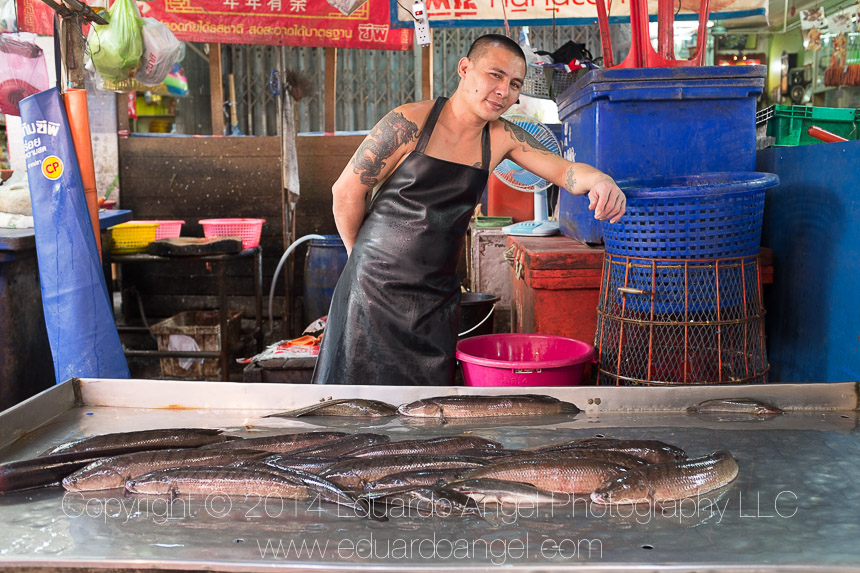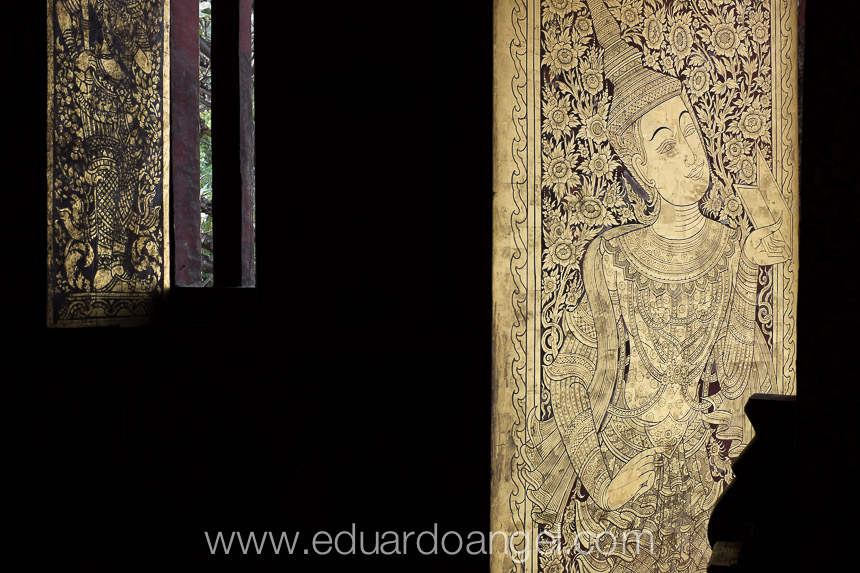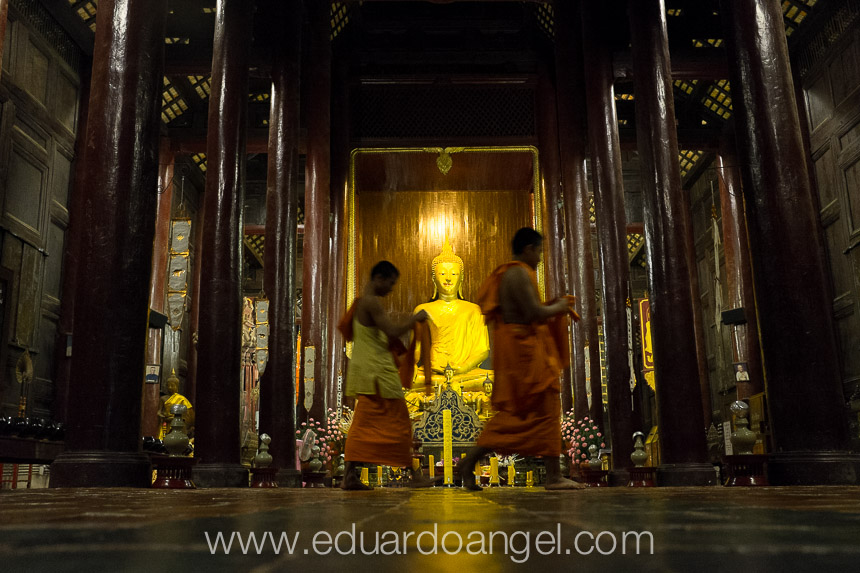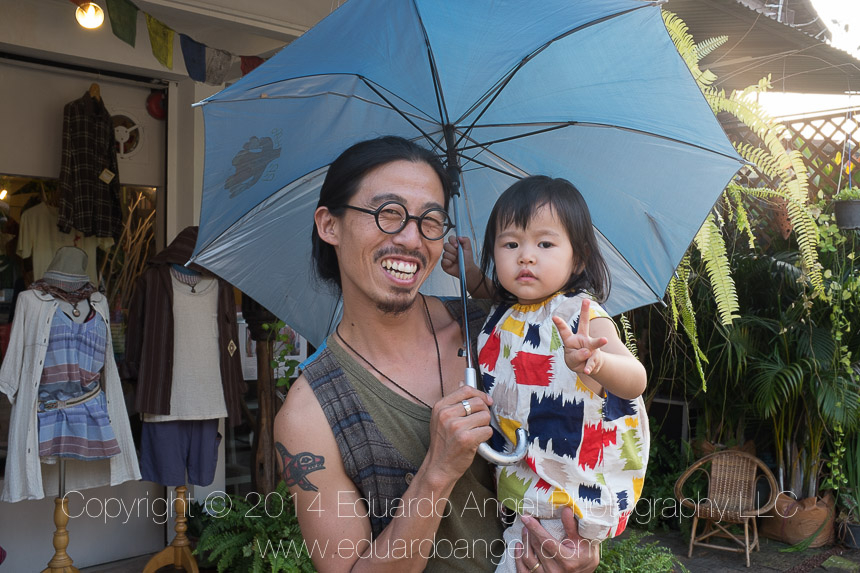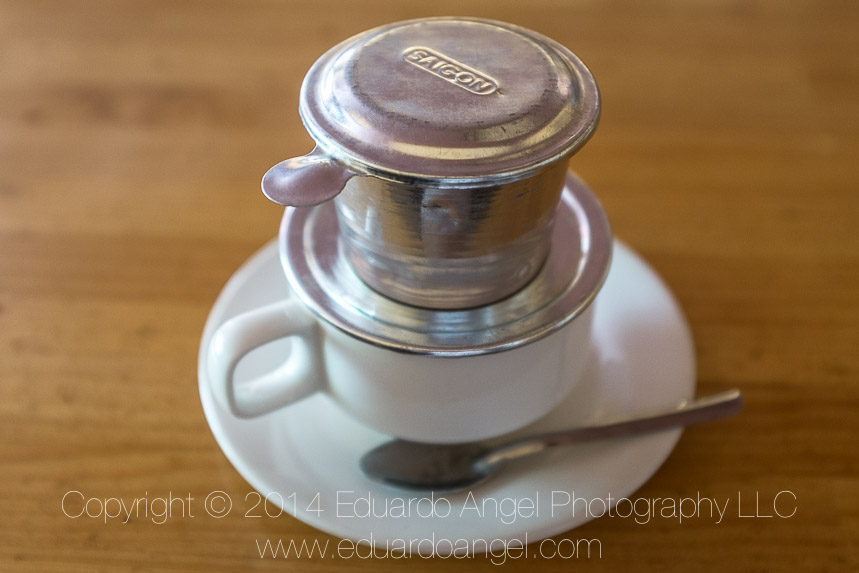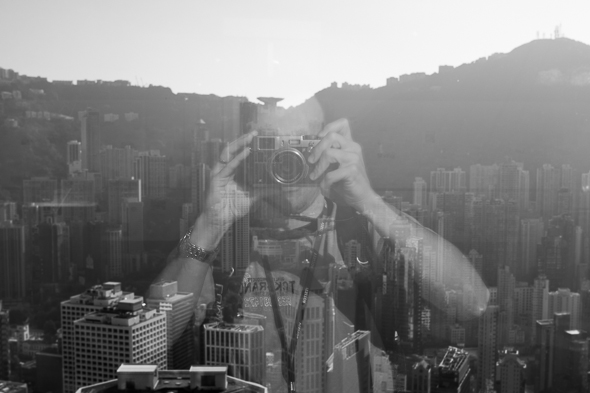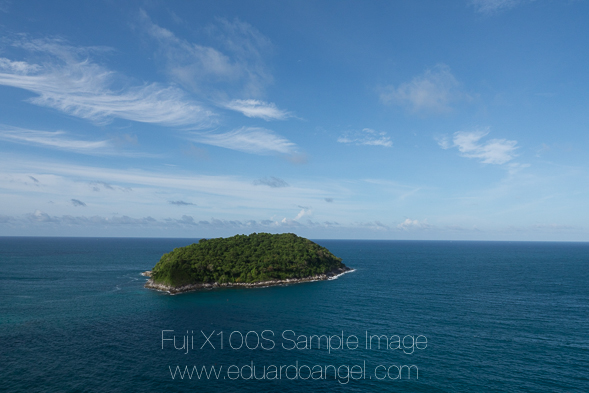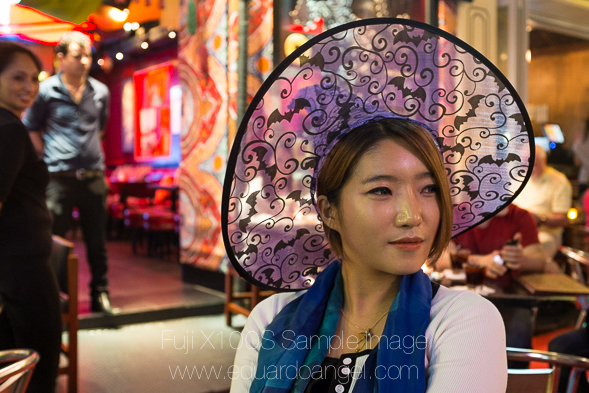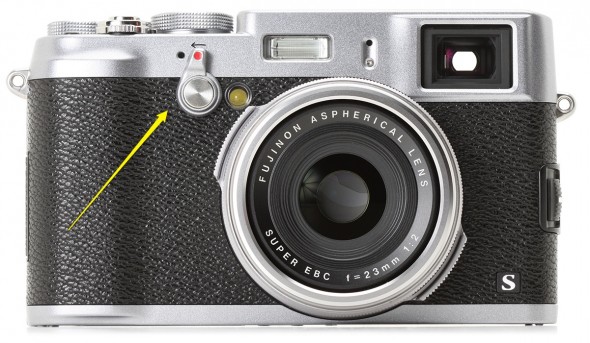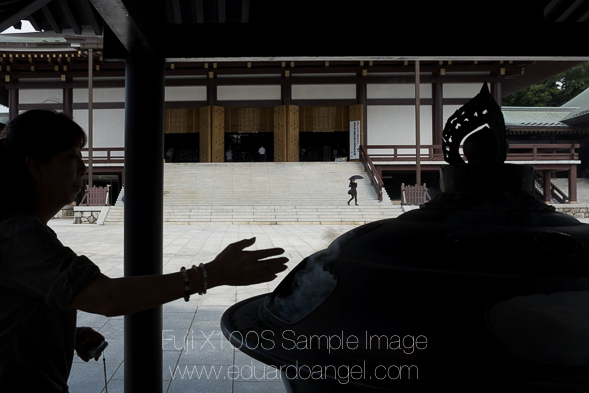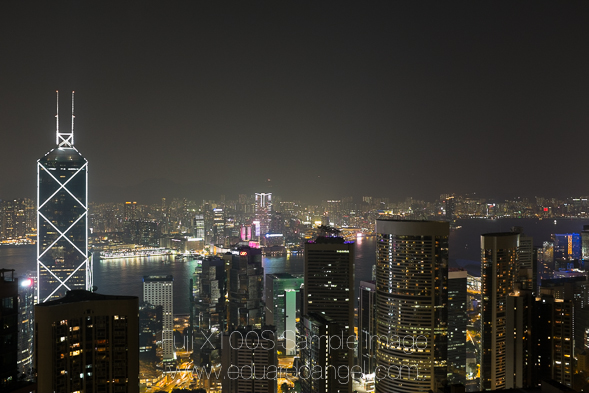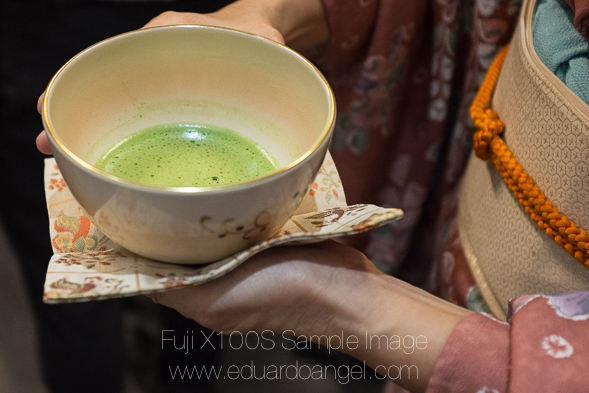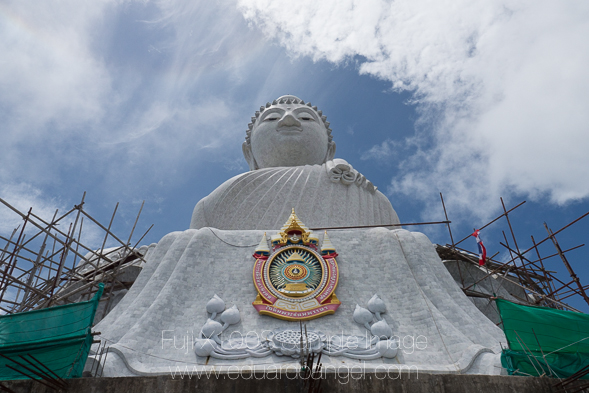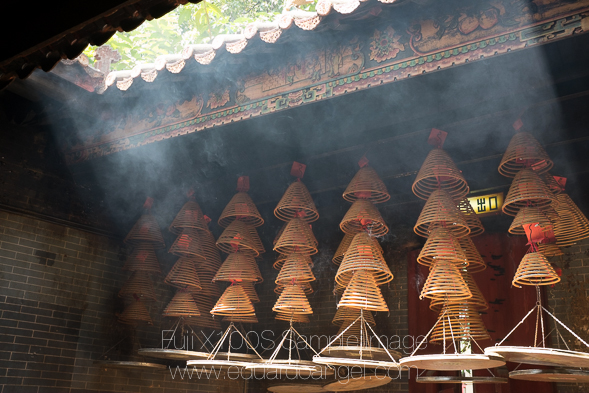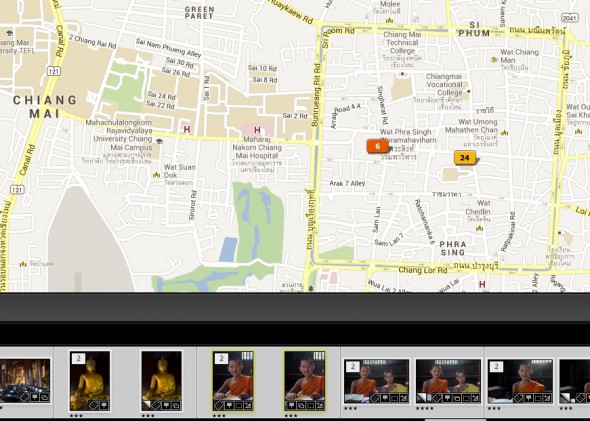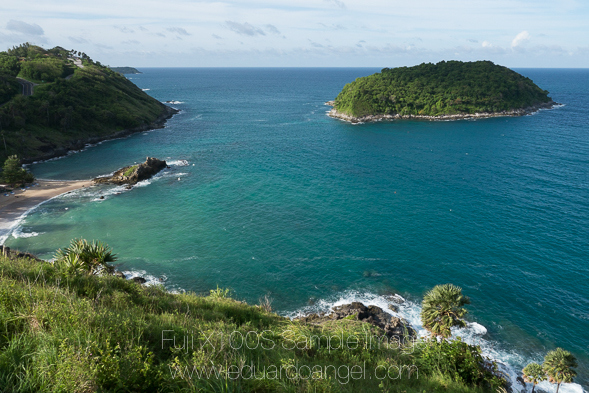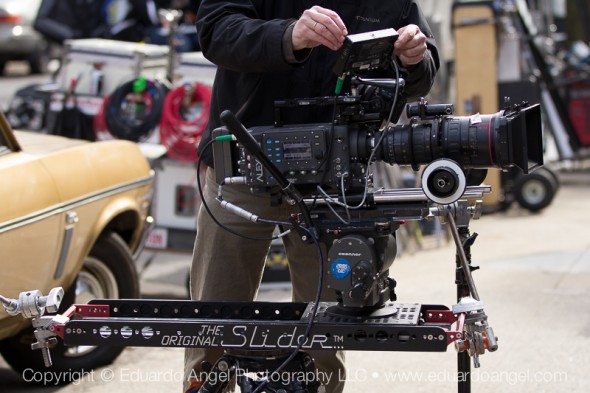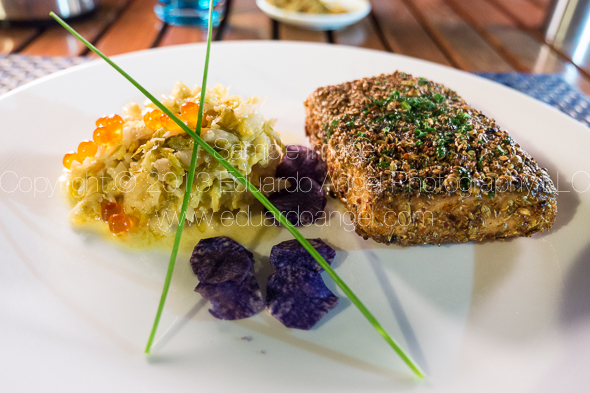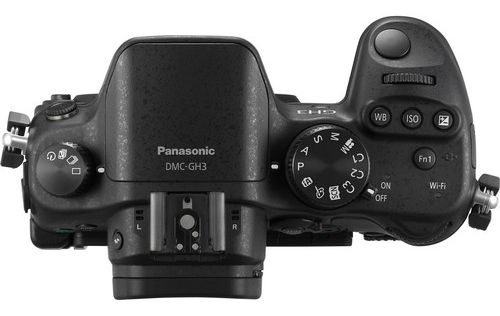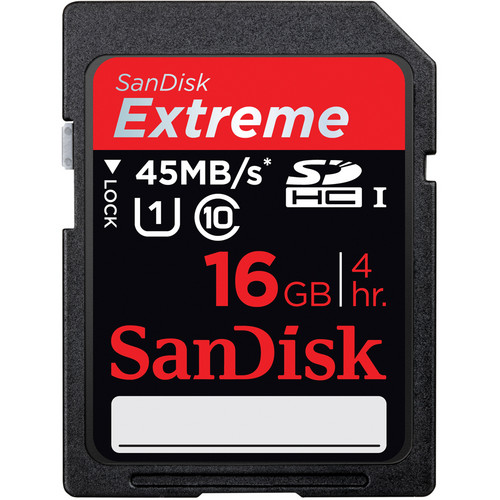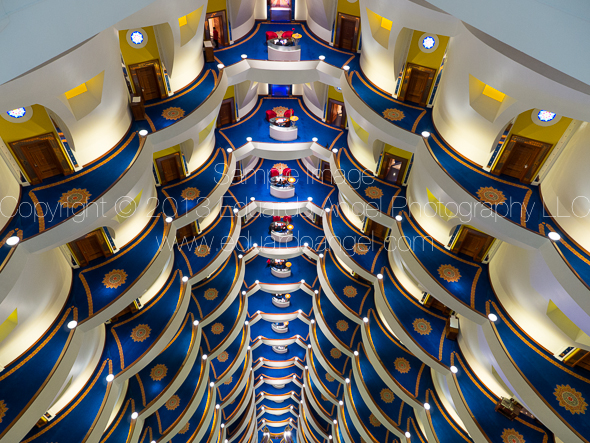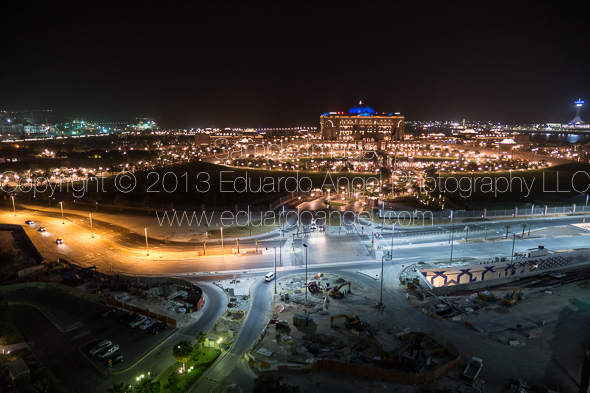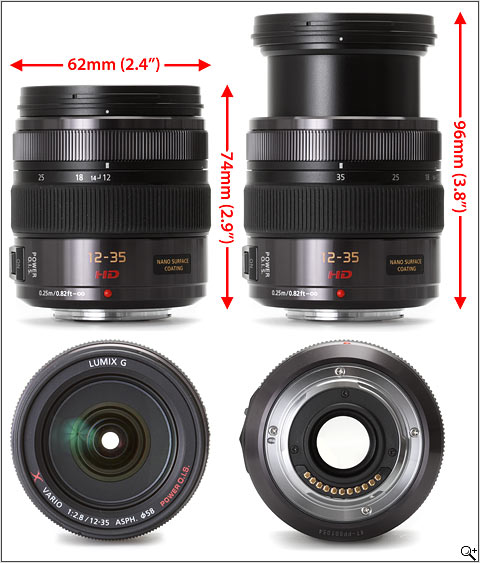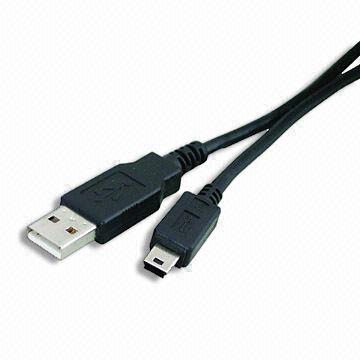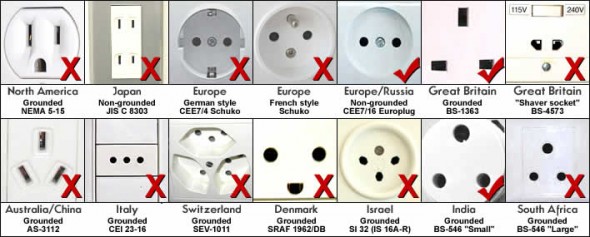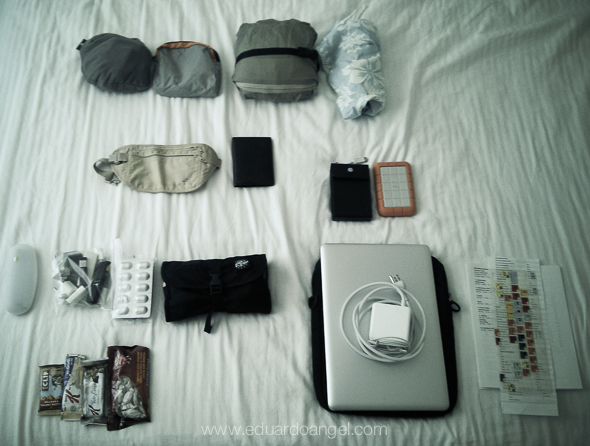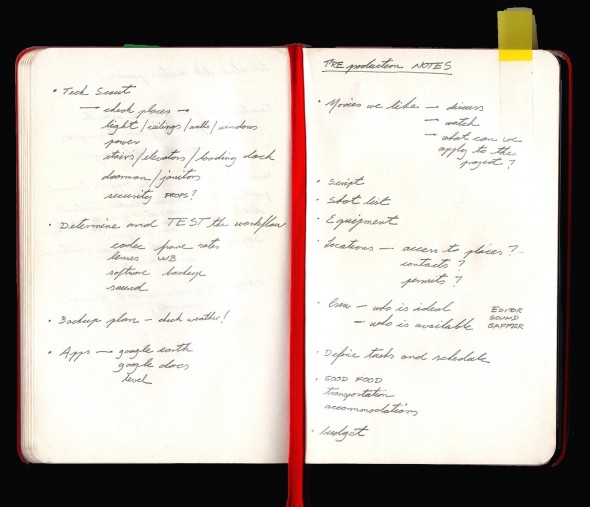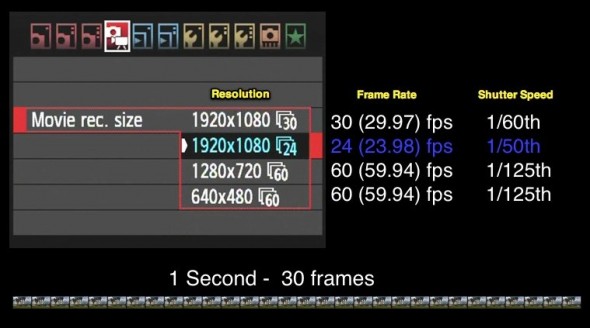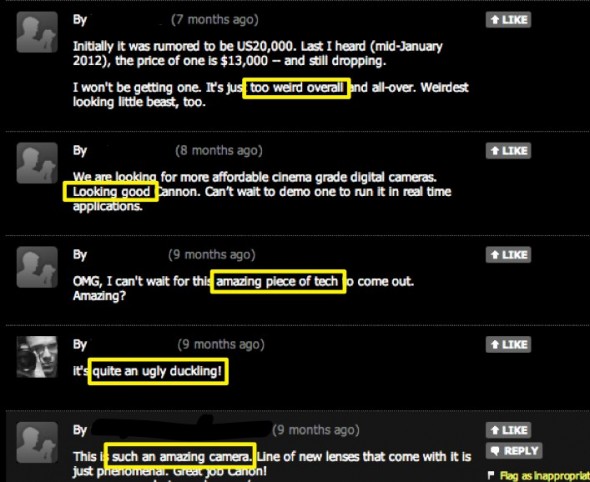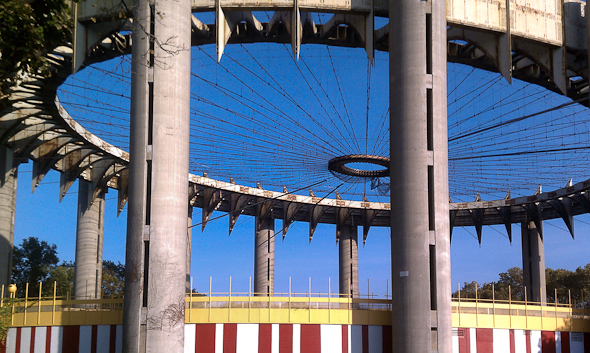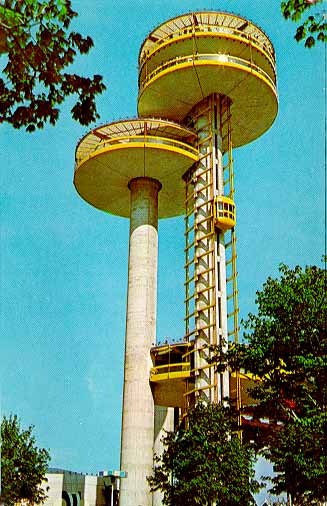Video
What do you do for a living?
“To many of us define our value, or ourselves by the work we do.”
Simon Sinek
So, what do you do for a living?
I’m often “confronted” with that question, which I guess for most people is easy to answer; “I’m a lawyer” or “I’m a social worker.” (Here’s my standard answer, in case you are curious.)
I enjoy doing so many different things that the answer mostly relies on who am I talking to and the context. I am a visual storyteller, I edit, I shoot, I write. I also teach, and consult for several different companies. But I also love learning about wine, and history. My background is architecture, which I still love. I like photography, but as of late have been learning as much as I can about sound design. Most of the book I read are about finance, and biographies. The podcast I subscribe to go cover the whole spectrum from Radiolab, to Freakonomics all the way to TED Talks.
So, what do you do? On a fascinating conversation between Cal Fussman and Simon Sinek they discuss this topic in a very refreshing and insightful way. I took the liberty to extract a couple of minutes from their interview, but I encourage you to listen to the whole thing!
“If you want to define me by anything, you define me by who I am.”
Simon Sinek
Sinke’s “Start with Why” book and TED Talk (below) are also worth your time.
Video
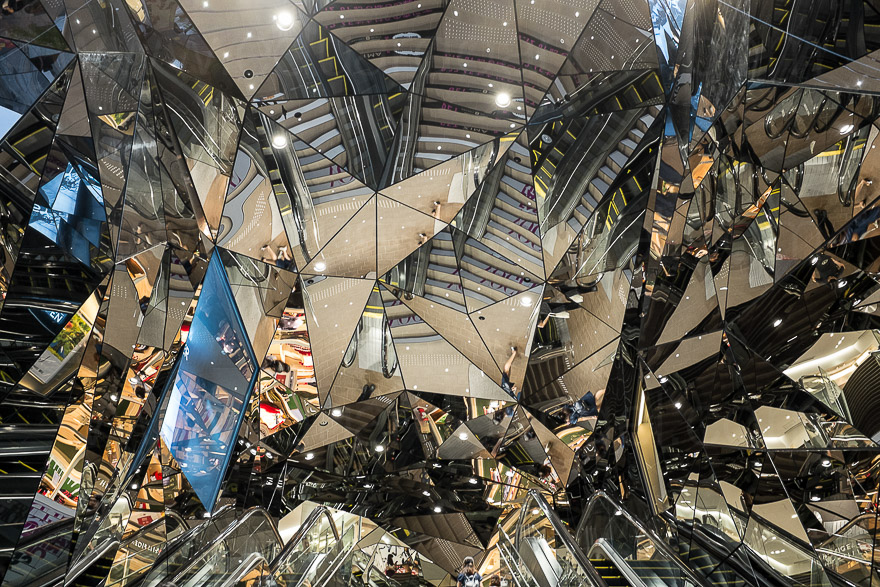
A filmmaker’s perspective on Japan.
Back in 2011 I made the best decision of my life: to get engaged. Wanting to “pop the question” at an unforgettable location, I asked my wife, then girlfriend, to write down her top five destinations that she had not yet visited. Coincidentally, and even though we both have traveled extensively, her first pick matched mine: Japan. The decision was made, air tickets were purchased, and hotels booked, but the timing was off. Just a few days before our departure, and with the ring well hidden in my camera bag, the Tohoku earthquake hit Japan. It was the fourth most powerful earthquake in the world since modern record keeping began in 1900, and the most powerful earthquake ever recorded in Japan.
A few weeks ago we FINALLY had the chance to visit this incredible country and culture, and on this article I’d like to share some of the most amazing things we learned and saw. Like some of my previous videos there’s a generous mix of stills, videos, soundscapes, music and narrations.
First things first
Most of us learned in school that Japan closed its borders in 1639 for more than 200 years, keeping only one seaport open for foreign trade exclusively with Dutch and Chinese sailors. A lot has changed, of course, and the country is currently the world’s third largest economy after the United States and China. This is truly a miracle for a nation that consists of more than 6,800 islands, has a population of 127 million people, and is smaller than the states of Montana or California.
As a little kid I spent countless hours poring over my grandparents National Geographic magazines. I dreamt about far and exotic places like “Antofagasta,” which I related to cannibals, “Ushuaia,” which to me was a synonym for the end of the world, “Oaxaca,” which I imagined full of little skulls everywhere, “Marrakesh,” with stunning belly dancers and crazy sword-fighting warriors, and “Kyoto,” elegant, peaceful, and extremely expensive. I loved the sound of each place.
Now, a “few” years later, I’ve had the privilege to visit all of these magical places and work in well over 700 cities in 50 countries, covering 40% of the world (according to Tripadvisor). Compared to my childhood pipe dreams, some countries have been much more interesting (Hong Kong and Thailand), and a few hugely disappointing (Russia and Vietnam top that list). There are no cannibals in Antofagasta, you can see little skulls in Oaxaca for “Dia de los Muertos,” and Ushuaia can’t be described in words. But Japan, in fact, so far, has been the one experience to closest match my dreams.
A World of Contrasts
If I had to define the country in a single word it would be contrast. Not necessarily as in the wide social and economic disparities one sees in India, China, or South America, but in the everyday culture itself; super-modern buildings next to architectural crimes, decadent meals followed by inedible dishes, massive pedestrian crossings and jam-packed subway cars followed by serene gardens, and very polite and quiet people during the daytime that get insanely wild and loud after dusk.
Random Fun Facts
Coming from New York, it always strikes me how clean and quiet other large cities are in comparison. Even Los Angeles and Houston seem muted in comparison. In that regard, Tokyo, the most populated metropolitan area in the world, is impossibly silent. And spotless. And huge. For example, Tokyo doesn’t have an actual downtown, but 23 of them, some with a daytime population seven times higher than their nighttime population.
Having been born in Colombia and experiencing first hand the country’s well documented violence during the 90s, it is hard to grasp how Japan, with the tenth largest population in the world can have the second lowest homicide rate, with only TWO gun-related homicides per year, and a conviction rate close to 99%. My brain can’t even process that information.
There are many fascinating things about Japan, from the expected, like magnificent temples, pristine gardens, and stunning package and lighting design, to the highly unexpected like the super-salty cuisine, and the lack of English speaking people and information in English even in popular tourist areas. Regarding tourism, we based most of our itineraries on Frommer’s and Fodor’s guides, which proved to be excellent sources of information.
We also tried to understand why there are virtually no public trash cans, but no garbage on the streets, millions of people everywhere, but no benches, and restaurants with vending machines, but no napkins. I’m still looking for those answers. Please hit me on Twitter if you have a good guess. And, speaking of Japanese vending machines, one can use any of the 5.5 million to buy beer, wine, canned coffee, cigarettes, food, comic books, toilet paper and even “adult literature and pleasure products.”
To widen our Japanese experience, we stayed at a high-end hotel in Tokyo, and at a Ryokan in Kyoto. The Ryokan, a traditional Japanese inn with tatami floors, paper blinds, a low table for tea and super tiny pillows, provided a unique, but not very comfortable, experience. As an added bonus we located a Ryokan that offered a private Onsen, or spring bath, that was masterfully built with exquisite wood, and harvested the local volcanic waters. Of course, Japan being Japan, even this relaxing moment had many strict rules to be followed in precise order before even touching the water. Overall it was an interesting experience, especially after walking 30,000 steps each day (according to my wife’s pretty handy Fitbit).
One early morning we got the rare opportunity to attend sumo training. As architecture buffs we used some rainy afternoons to visit buildings and stores by our favorite Japanese designers. We tried hard to cover as much of the Japanese culinary spectrum as possible, from quick lunches at shopping centers’ basements, vending machines, and food trucks, and dinning at traditional Izakayas where we tried delicious Yakitori and horse sashimi.
We obviously “had” to fit in a few Michelin-rated restaurants as the respected “foodies” publication has awarded Tokyo the most stars of any city in the world. More than the food itself, the service, presentation, and attention to detail are what truly offers a remarkable experience.
More Random Facts
Japan imports 85% of Jamaica’s annual coffee production, but the fancy coffees we tried were consistently inconsistent. I might get shot for saying this, but the $1 coffee at 7-Eleven was MUCH better than most of the $8 fancy brews we tried. And I’m Colombian, I do know my coffee.
Japan is also the world’s top importer of reggae music and has the largest proportion of jazz fans in the world. We treated ourselves with a jazz concert (and grossly overpriced drinks) at the Park Hyatt‘s bar, from “Lost in Translation” fame. The city views from the fancy bar are great, especially at nighttime, but you get pretty much the same view for free only two blocks away, from Tokyo’s Metropolitan Government Building, where you can also get a very filling lunch for about six dollars.
Gulping down your drink and slurping is NOT considered bad manners (mom, are you reading this?), but somehow eating or drinking while walking down a street is considered very rude and nobody does it. The Zen proverb “When walking, walk. When eating, eat” is silently but effectively enforced all the time, and everywhere. One day we had to go back to our hotel, just a few blocks away, to finish our Bento box lunch.
We did enjoy bowing on meeting someone, but sitting on the floor with your hands in your lap and your legs tucked under you, not so much. Perhaps because I’m less flexible than a tree. When wearing my first kimono I created a small “fashion emergency” with the Ryokan’s owner, as one should always wear the left side over the right side. The opposite of this is only observed at funerals. Something similar happens with chopsticks; do not point them at other people, never wave them in the air or stick them upright in the rice, since they’ll look like sticks of incense at a funeral. How are you supposed to know all this?
Cash is definitely king, and many ATMs in Japan do not accept international debit cards, with the wonderful exception of the ATMs found at the 10,000 7-Eleven stores. Coins are required for buses, trams, and lockers. We had read that Internet access was horrible, but I have to disagree. Both our hotels, many subway stations and bus stops provided free Internet access. If all you need is checking your map or access something on Dropbox you should be fine. If you are planning to stream movies or video games, stay home.
Packing Tips
In terms of packing, we broke a new personal record for this trip. We were able to fit everything into ONE suitcase. In case all the women reading this article are wondering, yes, my wife wasn’t too happy at first, but she came to appreciate my logic while navigating major transport hubs like Shinjuku, which serves 4 million passengers a day, and holds the title as the world’s busiest station.
In addition to the single suitcase, my wife had a very light daypack, and I brought my favorite photo backpack.
Regarding photo and video equipment, I’ve been traveling extremely light and small. This time I brought two Panasonic GH4s (Amazon • B&H), two Panasonic Lumix lenses (Amazon • B&H) , and a Fuji X100S (Amazon • B&H). This is pretty much the same gear I’ve used on assignments in Europe (article on Sigma’s website), Turkey, and commercials like this.
Something I failed to pack (and struggled to find in Tokyo) was a “3-Prong to 2-Prong Adapter.” Considering one can get two for $6 on Amazon, it was very painful to waste precious time walking from store to store and trying to explain what a “3 prong” means with body language and childish drawings. To connect multiple devices I ALWAYS bring two essential items: a mini power strip to charge phones, batteries, and laptops using a single outlet, and a compact USB hub, to connect multiple hard drives to my laptop. This year I’ve been using these small and cheap external hard drives on my travels, and so far they’ve worked perfectly. If you are interested in seeing what’s inside my camera bag, I wrote an article with “The Essential 41 Items” for photography and video assignments.
The Final Product – The Video
Shooting stills, and video, and recording soundscapes while traveling alone is hard, I’m not gonna lie. Doing all that with your (extremely patient) wife is even harder, but totally worth it.
Obviously it’s impossible to understand a country, city, or even a neighborhood in just a couple of weeks. I’ve spent nine years in New York and every weekend we find something new to do, see, or eat. But, we only have one chance to get a first impression, and I believe those first reactions are great ways to identify interesting trends and cultural differences.
The video below has tons of additional information about Japan in general and our travel adventures in particular. If you like traveling—and eating delicious food—I’m sure you will enjoy it, and if you do, please SHARE the love!
If you are looking to expand your creative options by adding video into your skills set or enhance your craft, don’t miss these courses on Lynda.com.
Video

Shooting 4K Anamorphic and V-Log with Panasonic’s GH4. Ten Valuable Lessons.
UPDATED: I just added two video tutorials: one comparing “Panasonic’s V-Log L vs. Cinelike D” and the second one “Conforming 4K Anamorphic Footage in Adobe Premiere Pro.”
Anamorphic is enjoying a huge comeback. The reasons to go this route vary from project to project, but generally it’s the desire to achieve a different look and use as many pixels from the sensors as possible. Panasonic’s Firmware Update v.2.2 (available here) enables an Anamorphic (4:3) Mode capable of recording video in 3328 x 2496 pixel (equivalent to approx. 8.3-megapixel) resolution at a frame rate of either 23.98, 24, 25 or 29.97 fps. With an anamorphic lens such as 2x Lomo lenses (see below) we now can capture and un-squeeze a 3356×2496 image in post-production. To make things even better, 4:2:2 / 10 bit HDMI output is also available.
Just like in 2013 when we had the opportunity to field test a GH3 in the Middle East and last year when we shot with one of only three prototypes world-wide of the GH4, for the past couple of weeks I had the privilege to work with director Davis Northern, DP and tech wizard Sean Davis and many other talented people on one of the very first GH4 Anamorphic AND V-Log L projects, shot exclusively for Panasonic North America and produced by The Digital Distillery.
Panasonic 4K Anamorphic and V-Log L – Official Video from The Digital Distillery Inc. on Vimeo.
The project was exciting and very challenging, as working with hardware prototypes and beta versions of software or firmware always is. We had a lot of moving pieces and an extremely tight deadline, but I’m proud of the final results and very satisfied with the lessons learned. This article covers some of the most significant ones, and it is written from my very own personal perspective. As always, I try my best to be as objective and brand agnostic as possible. The lessons aren’t in any specific order and some links will take you to articles with additional information . Please consider using our links to help support our very time consuming articles and tutorials.
Ready? Let’s go!
1. Shooting Anamorphic
It can definitely be achieved by a very small crew on a small budget. We mostly shot with a crew of three, with very limited gear and time. I’ve always assumed you needed a 2-ton truck and a crew of 30 to pull this off. Clearly, this was not the case for us.
2. Lenses
In terms of lenses, we opted to keep a “low profile” while keeping our options open. In other words, we rented a set of vintage anamorphic Lomo lenses (35, 50, and 75mm) and tested an SLR Magic as well as a Letus AnamorphX 1.8X Pro Adapter and a Veydra Mini Prime.
A. Lomo:
The lenses are huge and heavy. Lomo 50mm + 75mm with case = 25lbs. Lomo 35mm with case = 35lbs with each case weighting about 30lbs. Not ideal for the “guerilla” approach we needed for this project. They definitely have a unique look, but are very hard to focus, especially when using a very flat profile. We rented the set for $500/day or about $1,700 for a week including tax. Not cheap by any means but definitely worth the investment in terms of time and quality.
If I were to shoot this project again (or on upcoming anamorphic projects) I probably would test the Cooke Anamorphic/i Lenses (25, 32, 40, 50, 75, 100, and 135mm with a 2x squeeze). Unfortunately these lenses cost about $30,000 each, and the rental rate is about $500 per lens, per day.
B. SLR Magic:
We had access to a very nice selection of Panasonic glass that we wanted to use with an SLR Magic adapter. The first challenge was that the front diameter on all the lenses has to be below 62mm in order to use the step down rings. The second limitation was (for the Panasonic lenses) that anything wider than 28mm would vignette. We could have used the Panasonic 12-35mm lens, at 28mm or longer (kind of pointless), but for some odd reason with the SLR Magic adapter it vignetted all the way even at 35mm. The Panasonic 35-100mm didn’t vignette at 35mm. Go figure. The next usable lens on our Panasonic arsenal was the beautiful 42.5mm Noticron f/1.2, but we needed a step DOWN ring (from 67mm to 62mm) that wasn’t included with the kit. The last option was the Panasonic 35-100mm f/2.8 lens, which worked well but focusing was a MAJOR issue (not Panasonic’s fault). I found the SLR Magic system very finicky and unreliable and unfortunately I can’t recommend using it.
C. Letus Anamorphx:
The Letus Adapter worked much better than SLR Magic but it was also cumbersome. A matte box is pretty much required and there was an issue with one of our widest lenses. The lesson here is, if you are shooting anamorphic, use the real thing.
3. Storage
There’s some heavy math involved when shooting Anamorphic. An anamorphic lens produces roughly a 2X horizontal squeeze of the image onto film. Traditional anamorphic lenses were designed to work on a 4:3 standard. The anamorphic footage captured with the GH4 on the Atomos Shogun is 3840×2160, so not technically 4K but pretty close. Shooting internally (to an SD card) the footage is 3328×2496, so greater vertical resolution than the 4K standard, but not full 4K horizontal resolution. To keep things in perspective, the 4K footage out of the GH4 4096×2160.
As you would expect, the files are huge. Shooting ProRes 422 you need about 4GB per minute of footage. Two cameras: 8GB, after only one backup you are at 16GB per minute. So somewhere around 20GB per minute is a pretty safe storage estimate for a two-camera setup. As always, we trusted all our very valuable assets to G-Tech Hard Drives.
Regarding Solid State Drives, Atomos has a great chart with all the supported drives for the Shogun and other devices. Make sure you triple check the chart before investing in one.
One SECOND of footage takes about 50MB so even if you are shooting into seemingly endless Solid State Drives, being smart about when to start rolling and when to stop can save a lot of storage.
4. HDMI
As we were shooting, Atomos was literally finishing writing the Shogun’s firmware update (available in May or June as a free download) will enable a number of awesome features:
- Anamorphic de-squeeze for Panasonic GH4 and standard lenses
- RAW recording to ProRes, DNxHR and Cinema DNG for compatible RAW formats
- Expanded RAW compatibility to include Sony FS series, Canon, Arri and AJA
- 3D LUTs on HDMI/SDI output
- Cinema 4K DCI support
- Uncompressed V210 support
- Genlock
We had to use a Small HD Pro7 (to de-squeeze) and the Shogun (to record in 4K). The setup seems pretty obvious after a lot of trials but it wasn’t at first. Here’s the executive summary that will hopefully save you some time and stress:
1. Micro HDMI to Standard HDMI cable from the GH4’s HDMI OUT to the Atomos Shogun HDMI IN
2. Standard HDMI to Standard HDMI cable from the Atomos Shogun HDMI OUT to the Small HD HDMI IN
3. In the Shogun, the 4K downconvert option should be OFF while connecting the Small HD and turned ON when everything is properly connected.
Our Small HD had a nasty tendency to constantly lose signal for no apparent reason, so step #3 had to be repeated many times throughout each shoot.
5. Premiere Pro CC 2014 Workflow
To be totally honest, I was shocked by how easy it was to conform the footage in post. Here’s what you need to do:
1. Import the footage the way you normally do.
2. Select the anamorphic clips.
3. Go to clip > Modify > Interpret Footage
4. Under “Pixel Aspect Ratio” select “Conform To” and “Anamorphic 2:1 (2.0).
5. Create a “new sequence from clip” and start cutting.
6. Done and done. Wow!
Here are some screen grabs from the camera’s LCD:
6. Focus
Focus is super, extra, hyper critical, especially when shooting with a very flat profile like the one we used. Unfortunately we couldn’t trust the SmallHD and had to rely 100% on the Shogun at a 1:2 zoom.
7. Accessories
• A sun hood for your external monitor is absolutely essential (if given the option get the black version).
• Obviously you will need lens adapters if you are planning to use the SLR Magic or Letus AnamorphX options.
• Make sure you get plenty of batteries, The small battery that comes with the Shogun lasts about 30 min only and we got about one hour of recording time with TWO Canon batteries on the Small HD. Instead of buying tons of batteries I’m a big fan of renting them (more here). The same goes for additional Solid State Drives.
8. Bonus lessons:
• Shooting anamorphic takes a lot practice and fine-tuning. I’d recommend scheduling at least a full day to test all the gear before a shoot.
• If we keep a small footprint and move fast, we can get a lot done.
• The “shoot without lens” on the GH4 must be turned on in order to work with the Anamorphic lenses.
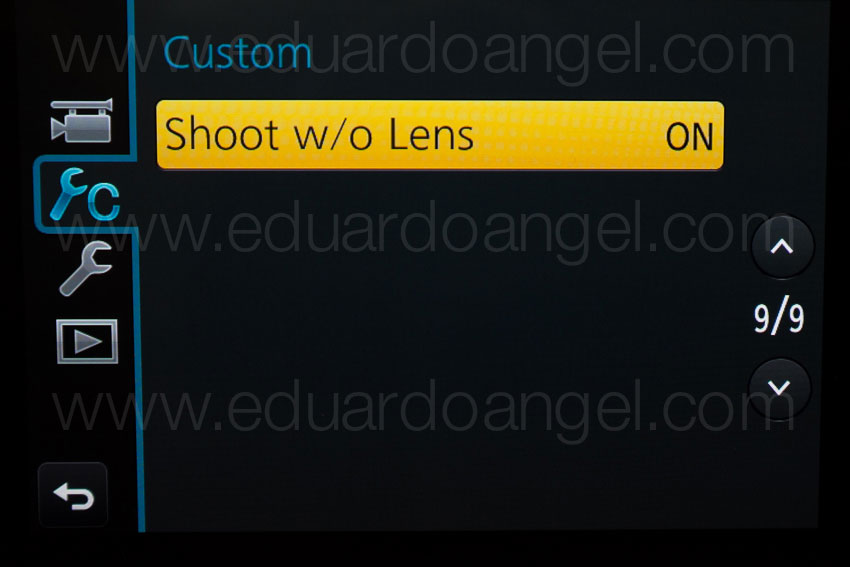

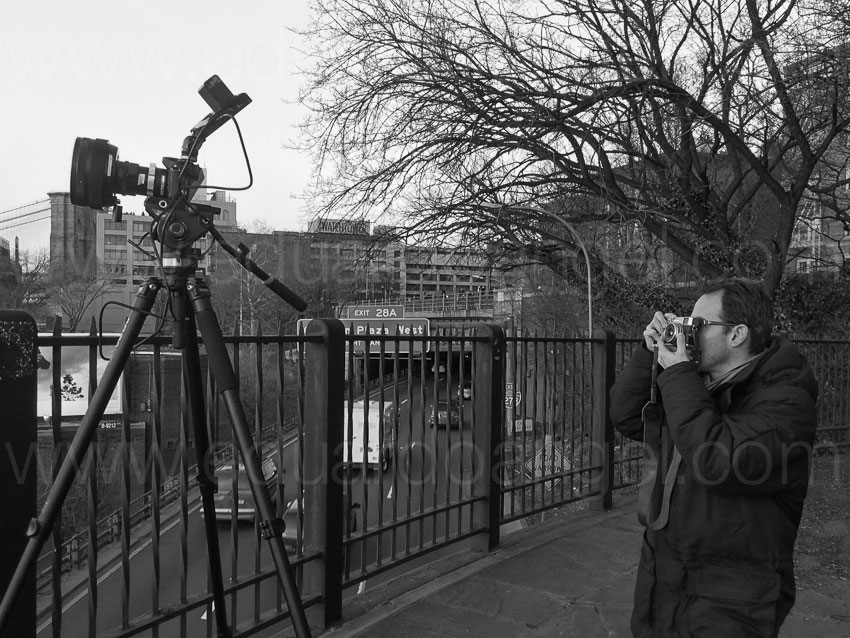
And…..here are two more videos (not anamorphic) shot with the Panasonic GH4. Check them out and let me know if you have any questions or comments via Twitter (@EA_Photo)
Video
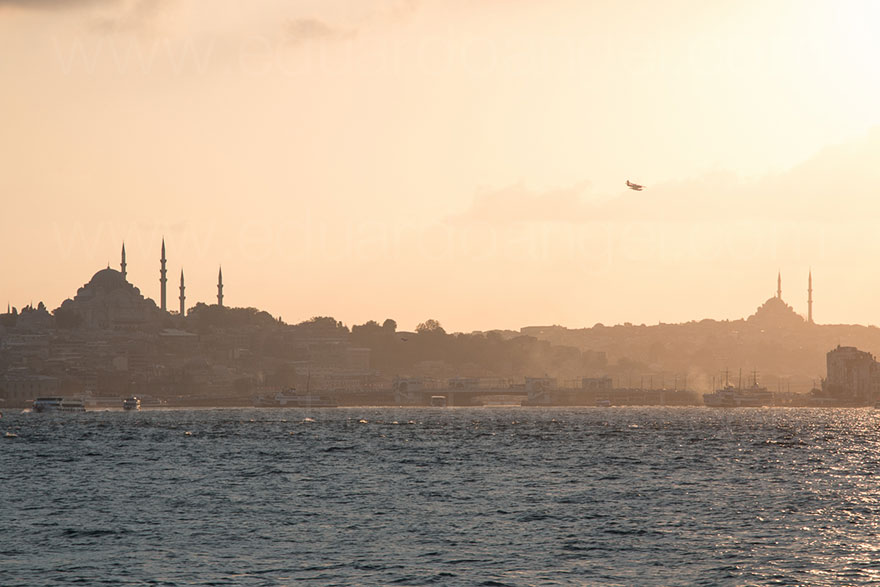
Documenting Istanbul, Paris and Brussels as a one-man crew.
Except for a couple of days where I had the priceless guidance of my friend Levent, I worked alone for three weeks between Istanbul, Paris and Brussels. The assignments required to capture stills, shoot video, record soundscapes, write, and edit everything together as I was moving alone. No problem!
The single operator/producer/editor assignment is becoming increasingly common for several reasons, among them lower production costs, as well as easier access to difficult locations.
I see a lot of opportunities for shooters currently doing weddings, corporate and sporting events, product launches, trade shows, video podcasts, student films or as in this specific project, travel and documentaries.
The main challenge is that on these hybrid productions getting the shot is paramount. There are no second chances, so preparing the shoot and planning for different situations is key. Another big challenge is how to travel as light as possible, but still carry a full production and post-production setup literally on your back.
After Istanbul I went to Brussels with its ancient roots, unique architecture, and bilingual arrangement. From there I went to Paris, the legendary City of Light, which always offers up myriad imaging possibilities. As you can imagine, all these cities were a playground ripe with incredible photo opportunities, and amazing food.
I recently wrote about my experience, lessons learned, and a few tips for Sigma, as I used their lenses for this assignment. The complete articles are available here and here.
If you enjoy my work, please consider sharing it with others. In today’s world, every click, share, and like counts. =)
Video
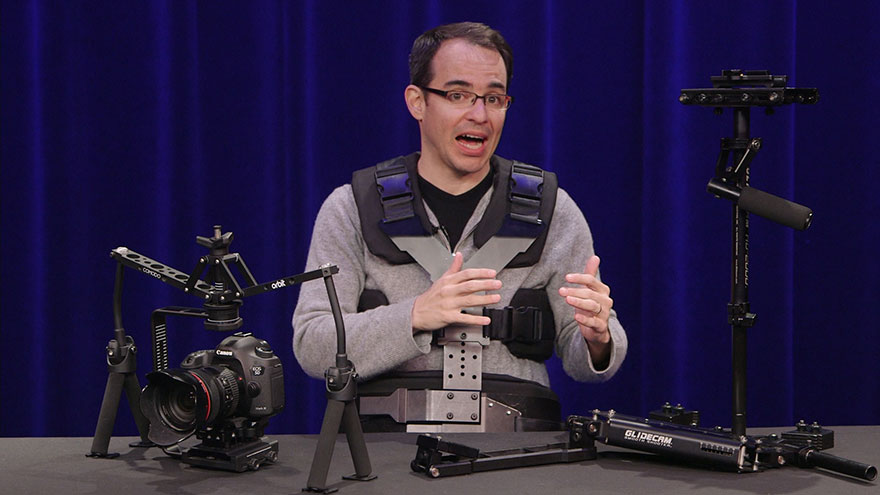
The 8 Best Tools of 2014.
Here are some of the tools that made a real difference for us last year. Just in case, the order in the list is completely random.
Panasonic GH4
What can I say that I haven’t already said about this gem? Tiny, inexpensive, intuitive, sharp, full of features—this is a truly remarkable feat of engineering to take our visual stories to a new level.
Fuji X100S
No, it’s not a typo! I know this is not the latest model, and that’s exactly the point. This little camera is so good that I see no need to upgrade, change, or even try something else. This is the perfect camera to take out on weekends, and when paired with a super sexy, real leather camera strap, the camera not only works well, it makes ME look good!
Sigma 35mm
In the next couple of weeks, Sigma will release a couple of videos I shot for them in Istanbul, Paris, and Belgium. All the lenses I brought with me were extremely good, but the 35mm was so extraordinary that I ended up NOT returning it.
Fiilex Lights
I rented these lights from Adorama for a Lighting Workshop I did in D.C. Among the reasons not to bring my own light kit were size, portability, and the ability to use multiple accessories with the same fixtures. For example, did you know that these lights can use all the accessories available for Profoto? Mind blowing.
The Fiilex more than delivered on all ends, and the guys at Adorama Rental provided their usual stellar job of testing, packing, and shipping the gear in time for my presentation.
Transcend 64GB UHS-3 SD Card
My tendency is to not put all my eggs in one basket, and to not keep all my day’s footage or photos on one card. I resisted switching from 8GB to 16GB for a while, while HD “forced”me into 32GB cards, and 4K made me seriously consider the 64GB Transcend, not only for the additional capacity, but for speed. The card was affordable when it was released and now it is almost half the price I paid for it just months ago. This one’s a no brainer.
DJI Ronin Camera Gimbal
Heavy. Difficult to set up. Costly. But when you make it work, it sings! We shot a lot of stuff with this toy, and the production value it added to our projects was simply outstanding.
Adobe Premiere Pro CC 2014
I was very much against Adobe’s Creative Cloud concept (and wrote about it here, here, here, and here), but after a year or so of using the apps pretty much on a daily basis, I love always having the latest version to work with. The significant efforts that Adobe has put into their video applications is totally worth the monthly payment.
13” Apple MacBook Pro Retina
This turned out to be not as fast as expected, more expensive than expected, and the latest OS X Yosemite was way worse than expected. Yet it made it into my “top tools”list. Why? Simply because the MacBook Pros are still, in my opinion, the best line of laptops available. The fact that we can edit, grade, and export 4K video on a plane or from a coffee shop still blows my mind. But Apple’s reign might be coming to an end very soon. 2015 will be a VERY exciting year for technology. I can tell you that much.
If you like what you saw in this summary and want to know more about how we actually use these tools, please check out our new online courses on Lynda.com along with some of the video projects we worked on during the year.
We look forward to keeping the conversations going this year.
News
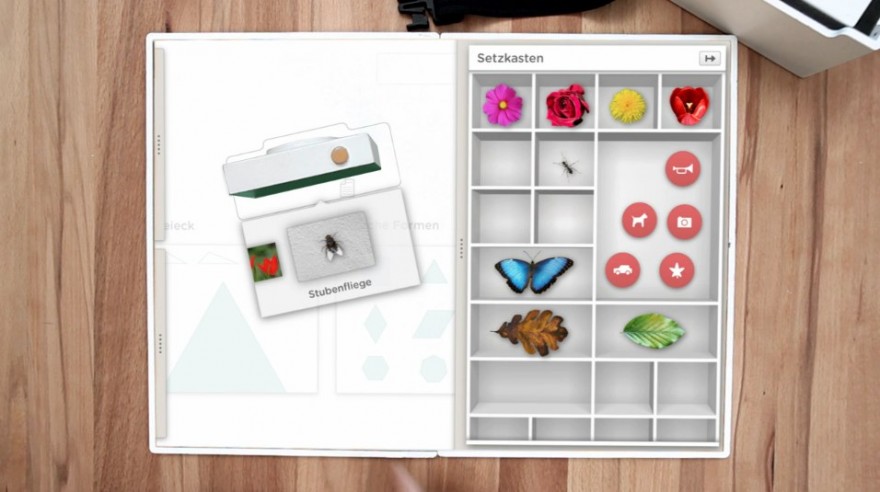
How to fix our broken education system. Some thoughts.
For several weeks we’ve been seriously talking about our education system, and we’d like to share some of our ideas on the subject.
The current education system is broken, outdated, and, dare I say it—dangerous. How did we arrive at this point, and what can we do to remedy the situation? (more…)
Photography
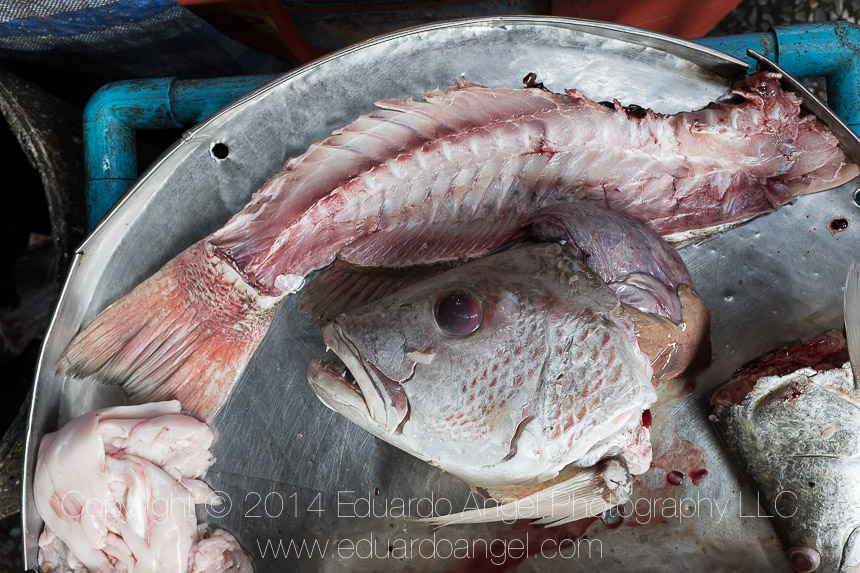
Traveling to Bangkok? Let me share a few tips.
Traveling to Bangkok? Let me share a few tips.
Don’t waste your time visiting the National Museum. The key galleries are being renovated so there’s very little to see. Keep in mind that no backpacks are allowed in the museum so you must leave your photo gear at the ticker counter unless you plan ahead.
Ah, the mysterious Thai cultural center. The first mission of this center should be to inform Thais of its existence. Even though I checked the map and asked a taxi driver, two cops, a receptionist, and even an official-looking guy in a suit, I wasted more than two hours trying to find the deserted center. Not a single employee spoke English and all the written information was in Thai.
I hate shopping malls, but in Bangkok they proved to be my best ally. Not only I could find clean restrooms and extremely cheap bottles of water (1.5 liters for 50 cents as opposed to 250ml for $8 dollars at my hotel.) Most malls also have a food court, selling the same food as street vendors and for almost the same price, but with a much more comfortable place to sit and rest.
In many countries, people don’t want to be disrespectful, so they make something up when you ask for directions, even if they have no clue what you’re talking about. I generally ask at least two different people to verify the info, and most of the time I get conflicting answers.
In Bangkok and especially in Chiang Mai you don’t even need to buy bottled water. You will find a 7/11 as often as you would find a Starbucks or Chase branch in Manhattan.
Do not rent a motorcycle in Phuket. Nobody will tell you this, but you need a Thai driver’s license. An international driver’s license only works IF you meet an honest cop who speaks English, which means, it doesn’t work. The traffic ticket costs $500. Not wearing a helmet will cost you another $500. No, I didn’t get a ticket, in case you were wondering!
We truly appreciate your support for this and similar project by purchasing My Asia • Photo eBook (iPad)
The PDF Version is herePDF version is available here, and the printed version from Blurb is here.
Photography
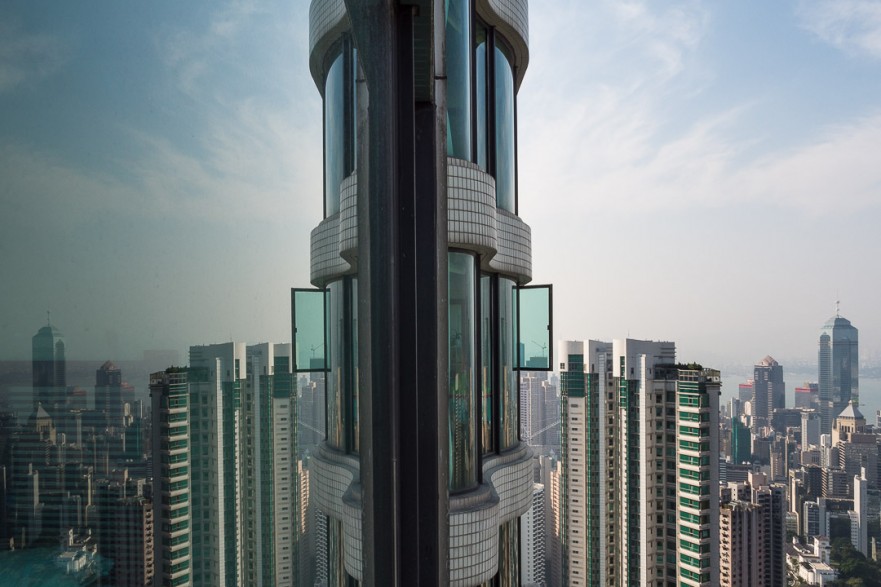
Hong Kong: The quiet city.
The quiet city.
Comparisons between Manhattan and Hong Kong are inevitable: Both are islands, have many skyscrapers, high-population densities, and crazy real estate prices. Both are magnets for money and people looking for opportunities. And both offer food prices that range from dirt cheap to insanely expensive. Hong Kong has 7.1 million people and a density of 17,024 people/sq. mile while New York has a population of 8.1 million and 27,550 people/sq. mile.
But, Hong Kong is different. VERY different. From the time you touch down, it takes less than an hour to move through immigration, travel to the baggage claim, and board the spotless and quiet express train. That’s easily the wait time at JFK’s taxi line. In Hong Kong every driver spoke English, helped us with our bags, turned the meter on without our request, knew the most efficient way to our destination, charged the exact fare and gave us exact change. I can’t recall the last time I didn’t have to give step-by-step directions to the airport’s cab driver in NY. Then, of course, I have to pay $60 for the privilege of doing their job. My wonderful taxi experience cost $10 in Hong Kong. The city is clean, modern, and efficient. It feels safe and full of opportunities. Most subway stations have shopping malls attached, with spotless restrooms, restaurants, and parks. It shocked me how quiet the city is. In three days we didn’t hear one siren. I wish I could say the same about Brooklyn.
Amazingly something like 80% of the island is a natural reserve. If you get tired of city life, you could simply take the 30-minute express bus for only one dollar to Stanley market, which is on the opposite side of the island and offers landscapes that compete with some of the best I saw in Vietnam. I recommend all visitors take the super-convenient double decker tram system and the a spectacular ferry ride. Each will cost 30 cents in American currency making them one of the best tourist bargains in the world.
Building the puzzle
Traveling to me is like building a puzzle without a reference image. Or, perhaps a chess game where you are one of the pieces moving from one place to another, deciphering maps, and memorizing names with 15 characters that look just like all the other names. It is all a fascinating game played in real time, without cheat codes, or escape menus. Just you and the new place you are about to discover.
There are tourists and there are travelers. The tourists are afraid of the unknown, the different. You see them eating at Subway or McDonald’s right next to the local food market. I am a traveler. I adapt to local customs, eat what the locals eat, enjoy trying new things, push my boundaries, embrace feeling uncomfortable, and have a blast getting lost. There’s truly nothing like traveling to recharge the soul. I love to reconfirm every so often that people are good and generous by nature, and that the universal currency is not dollars or Euros, but smiles.
We truly appreciate your support for this and similar project by purchasing My Asia • Photo eBook (iPad)
The PDF Version is herePDF version is available here, and the printed version from Blurb is here.
Photography
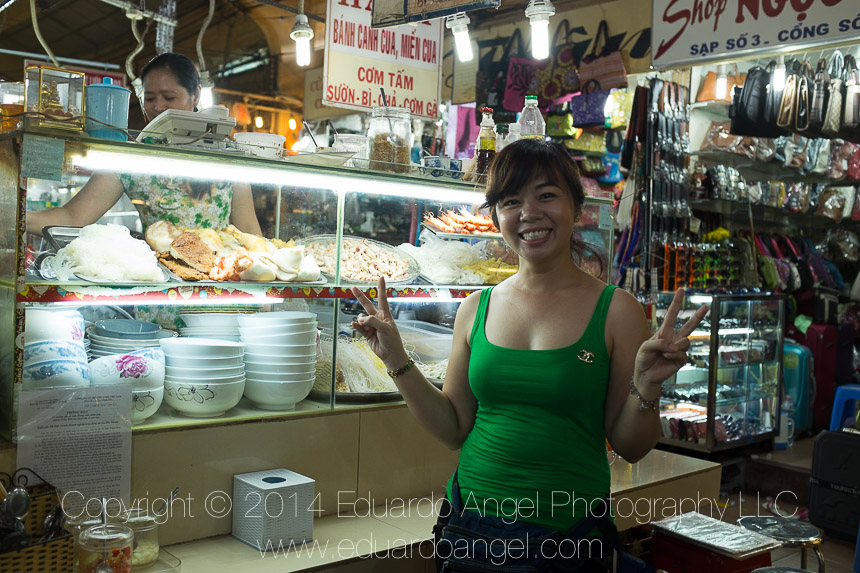
Sir, you are crazy! Welcome to Vietnam.
Sir, you are crazy!
My growing up in Colombia turned out to be a huge advantage for traveling in Asia. We Colombians and Asians have a lot in common. We can cross avenues with hundreds of motorcycles zooming past. We understand that sidewalks and stoplights are mostly symbolic. It’s in our blood that the asking price for an item is merely a suggestion and we can haggle until the end of time. We can smell danger coming. We can eat almost anything without getting poisoned. We have a superhuman ability to locate and exterminate bugs. Coming to Asia makes you realize that growing up in a third world country has key advantages.
In Ho Chi Minh City I received the best compliment ever: “Sir, you are crazy! You are like the American chef on TV!” The gentleman in question was referring to Anthony Bourdain and the reason for the wonderful reaction was simple. When traveling alone, I like to ask cab drivers to take me to THEIR favorite lunch or dinner spot. They always know the best places in town. My driver and I feasted on Pad Thai at the eatery where he takes his girlfriend. It was the best Pad Thai I’ve had in my life. And it cost $1.50.
Friends often wonder how I obtain access to so many interesting and often difficult-to-infiltrate places. The answer is fairly simple—I ask questions. One example: while having breakfast I asked my waitress for sightseeing recommendations. She sent me to the War Museum. There I saw three geisha-looking women entering a room. I went to see what was going on and I was told it was a private Tea Ceremony for the Japanese Consul. After a quick introduction and talking to the right person, I was invited to stay, and for four hours I witnessed a fascinating Japanese tradition at the War Museum in Ho Chi Minh City. All because I simply started asking questions
Halong Bay was breathtaking, but after Thailand, Vietnam was disappointing. Sadly, the vast majority of Vietnamese we dealt with were unnecessarily rude, or, at best, simply didn’t care about engaging in anything that didn’t represent money changing hands. I was told that this `is a common expression of independence. Vietnam has a cultural history of more than 20,000 years—that’s one of the longest continuous histories in the world. They have been the target of so many foreign aggressors that yelling “no!” to a foreigner must feel great. Unfortunately, tourists don’t understand, nor appreciate, this behavior and will increasingly choose friendlier countries like Thailand, Laos, Cambodia, and Singapore in which to spend their time and money.
At any major tourist destination it is nearly impossible to walk for more than 30 seconds without having to stop for someone taking a picture. The weapons of choice are iPhones shooting vertical video and tablets with very thick covers for stills.
Also trending are what I call the IVSTs (iPhone vertical video self-portrait tours). The culprit chooses the busiest walking intersection at a popular tourist destination and records themselves talking nonsense about the place. An example: “this is the largest temple in the world and it is very old.”
We truly appreciate your support for this and similar project by purchasing My Asia • Photo eBook (iPad)
The PDF Version is here PDF version is available here, and the printed version from Blurb is here.
Photography
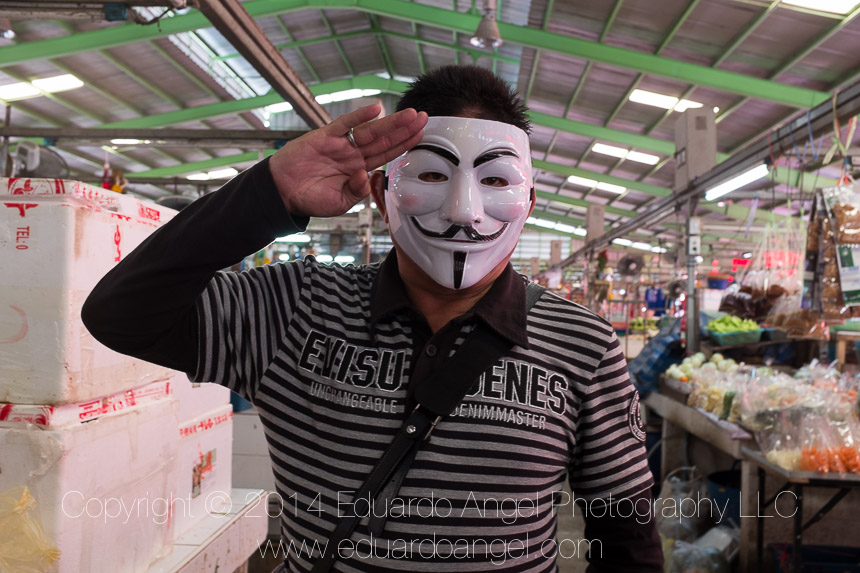
Thai people and the guardian of wealth.
The guardian of wealth.
Proud and humble don’t seem to fit in the same sentence but Thais are proud, yet humble, people. You can see it in their eyes, and the way they treat each other.
As in all my travels, my most rewarding and exciting experiences are the exchanges with locals. Spending quality time chatting with locals like Krit, a very hip computer animator, or Mr. Tanta, a very proud police officer, gave me a much deeper understanding of Thailand than any book, movie, or tourist tour could ever do.
I spent a lot of time talking with Buddhist monks who inevitably would ask my name and then ask what it means. Eduardo, for the record, means “the guardian or keeper of wealth, where wealth could be understood as knowledge.” Chatuphon, my 17-year-old friend photographed here means “the four blessings” which are: A long life, Be rich, Be strong, and Be healthy. I’d say that’s a powerful and meaningful name.
By far, the most fascinating character on this trip was Eak. Now in his mid 40s, Eak was born and raised in Switzerland by a Thai mother and Swiss father. He speaks PERFECT German, French, English, Thai as well as some Spanish. He visited Thailand for the first time when he was 20 years old and told me that he suffered a culture shock. “I didn’t understand why these people, my relatives included, chose to live under such poor conditions,” he told me.
After working for a very large and well-known corporation in Zurich, and making, according to him, “more money in one hour than what he now makes in three days,” he returned to Thailand to take care of his dying mother. “I was in shock for an entire year.” He now works as a driver in a boutique hotel in Phuket. Are you planning to go back to Zurich? I asked. “The life quality is here, but the money is there. I still don’t know what to chose.” I can certainly understand his answer.
Phuket is both an island and a province, the largest in Thailand and about the size of Singapore. Places like this are like paradise. No rocks, no corals, no trash, not even shells. Just very fine sand and body-temperature water so calm that you could mistake it for a pool. The only sounds are the waves crashing, a few birds chattering, and the occasional jet ski.
It seems that the only requirements to open a bar in Chiang Mai are a pool table, a fan, a bottle opener, and the willingness to ask foreigners if they are interested in receiving a massage.
We truly appreciate your support for this and similar project by purchasing My Asia • Photo eBook (iPad)
The PDF Version is here PDF version is available here, and the printed version from Blurb is here.
Photography
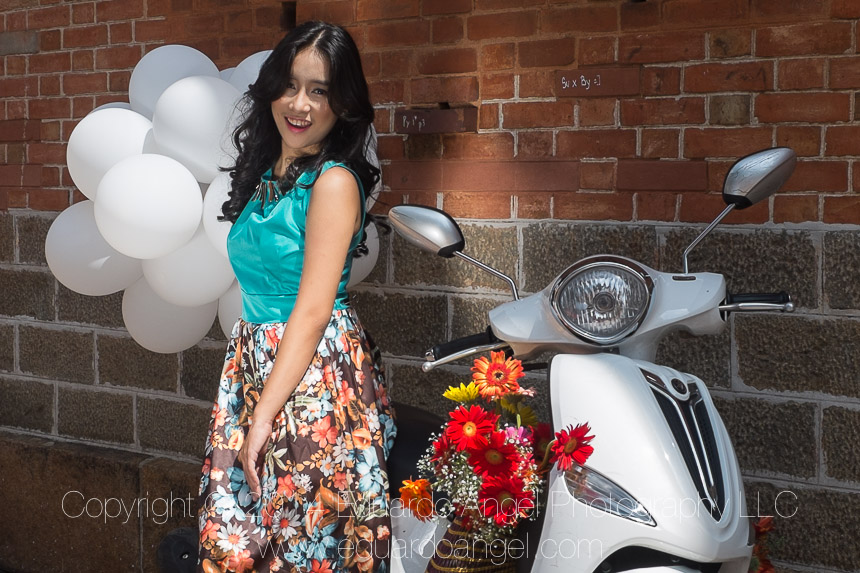
Traveling to a foreign country is like falling in love.
Falling in love.
I’ve always believed that traveling to a foreign country is like falling in love. All your senses are heightened; everything is new, exciting, and mysterious. You can almost taste the colors and touch the smells. You experience mundane things like the rain or city lights from a different perspective. This is especially true in places where I don’t speak the language. It is wonderful to be unable to understand most billboards and ads!
Architectonically, Bangkok is similar to South American capitals like Bogota or Santiago, but hotter. Other key differences include an efficient subway, an impeccable elevated train, express buses, and a wonderful river taxi system (local, semi express, and express). The signs and ways to purchase tickets are so well organized that even without help one can understand and navigate the system right away. The city is shockingly clean, safe, and well organized. When compared to New York and other “world capitals,” Bangkok is years ahead.
The mid-sized Lumphini Park is a small-scale version of Central Park right at the heart of the city. I arrived at sunrise, looking to photograph people jogging and meditating, and, indeed, I found that. However, I also spent some time with a tai chi master, was invited to have breakfast with a group of retired Chinese folks, and photographed a woman who in the 70’s was the number-one dancer in Thailand and number-three in all of Southeast Asia. Now she teaches others how to dance tango. She even gave me an autographed photo of herself!
The food in Thailand is phenomenally tasty and affordable. I often had lunch with an appetizer, two entrees, dessert, and a Pepsi. All for a bit less than three dollars, including tip. Here’s another tip: I strongly recommend that you NEVER peek behind a street vendor’s shop. It ain’t pretty. Trust me.
It always takes a few days to flush the “New Yorker” in me out of my system. I want things to be quick and efficient, and I hate to wait. People in Thailand, especially outside Bangkok, are NOT in a rush. It can be frustrating trying to squeeze in tiny corridors with hundreds of people moving slowly, or waiting forever for someone to show up. The only real option is to adapt, slow down, and go with the flow.
If you want to discover the local habits and avoid touristic clichés, Khlong Toei Market is the real deal. For two hours I was the only foreigner and the only one with a camera. A traveler’s paradise. It’s a short walk from the National Convention Center and it’s challenging, but it’s totally worth a visit. The fish and crabs were still alive, the calamari was swimming in its own ink and the pigs’ heads were still bleeding. Don’t wear flip-flops or sandals—what looks like blood is blood. Wear a shirt that you can wash right away, and plan to take a long shower immediately after visiting this market. The smells will stick to you, but so will the experience.
The first few days of visiting Buddhist wats are fascinating. All those colors and details. So much history, and so many traditions I can’t even begin to understand. The Emerald Buddha (which is really carved from green jade) was first DISCOVERED in 1434. The sacred image wears one of three seasonal costumes: Summer, Rainy Season, and Winter.
I was told that in Buddhist wats, the bells toll three times a day: once to announce the start of the day, once at noon, and once to signal the end of the day. Monks are prohibited from growing their own food, storing their own provisions, or cooking their own meals. I was very surprised to know that some of them are not vegetarians. In Thailand, they rely on whatever is freely given to them by others, and this might include meat. The monks eat twice a day—breakfast at 7 a.m. and lunch around noon. After that, they are only allowed to drink water and other liquids, but they can’t eat solid food and they can’t store food overnight.
After a few days of visiting wats, your eyes and mind stop seeing—you are there, wanting to be moved and inspired, but the feeling is harder and harder to recapture. In Europe we can get overloaded by visiting too many churches and museums in too short a time. In Asia, one can quickly experience wat and crowd overload. Be sure to enjoy those first few days of innocence and wonder.
Bangkok’s Chinatown is like the opening sequence from the 1994 film Chungking Express—chaotic, overcrowded, packed with long and narrow hallways, and hundreds of people walking extremely slowly. The two competing shopping malls are “China World” and “India Emporium.” It seems like a good commercial representation of the world.
We truly appreciate your support for this and similar project by purchasing My Asia • Photo eBook (iPad)
The PDF Version is here PDF version is available here, and the printed version from Blurb is here.
Photography

From New York to Tokyo. Fanning the smoke.
Fanning the smoke.
My visit to Japan wasn’t planned. My Delta flight from JFK to Tokyo was delayed and I missed my connecting flight. With 24 hours at my disposal I took this impasse as an early and welcomed present. My brief visit to Japan was smooth and easy. Everything is properly organized, scheduled, packaged, and explained. The people are so polite and friendly that I felt like a celebrity everywhere I went. So many folks were so happy that I wondered if this was all just a performance!
If you are ever stranded near Narita International Airport, it doesn’t make a lot of sense to go to Tokyo unless you have at least 12 hours available “inland.” Additionally, my wife and I have planned to visit Tokyo together for a long time, so I didn’t want to spoil our dream destination. I chose going instead to the magnificent Naritasan Shinshoji Temple.
It was deeply moving to see people of all ages at the temple, all showing a sincere and profound respect for their surroundings. Visitors washed their hands at the purification fountain and some even rinsed their mouths before entering the temple.
Americans are impressed with buildings or furniture that’s one-hundred years old. Europeans are proud of their four-hundred-year-old cathedrals. Here, you can witness one-thousand-year-old temples and truly ancient objects (Naritasan was built in 940 CE). You can feel history and tradition in the air, which, from a distance, smells like wood and incense. I later realized it is customary to burn incense and offer a prayer, then extinguish the flame by waving the hands, and fanning some of the smoke toward the person, as the smoke is believed to have healing powers.
Many religions believe that burning incense is good for the soul, but in Japan it is also an indicator of refined taste. Seeing my amazement, and perhaps all the time that I spent trying to capture the essence of the moment with a tiny camera, one of the temple keepers approached me. I assumed he was kicking me out. On the contrary, he was eager to see the images I was taking and more than happy to answer my endless questions. During our brief and fascinating conversation he mentioned that during World War II, most bells in Japan were melted down to make weapons and that 70% of all of Japan’s incense is manufactured on one tiny island south of Osaka called Awaji.
A few more interesting snippets about my brief time in Japan: Contrary to what I have read over the years about the country and my experience with Japanese people I have met on the road, I was a bit surprised by the lack of people speaking English. Case in point, high school students couldn’t understand me when I asked for directions. One associates Japan with fish and sushi, but I saw and ate more meat in Japan than in any other country, except Argentina. Finally, what’s with the heated toilets? If there’s a cultural explanation for this, please shoot me an email.
The Intro to this project is available here.
We truly appreciate your support for this and similar project by purchasing My Asia • Photo eBook (iPad)
The PDF Version is herePDF version is available here, and the printed version from Blurb is here.
Photography
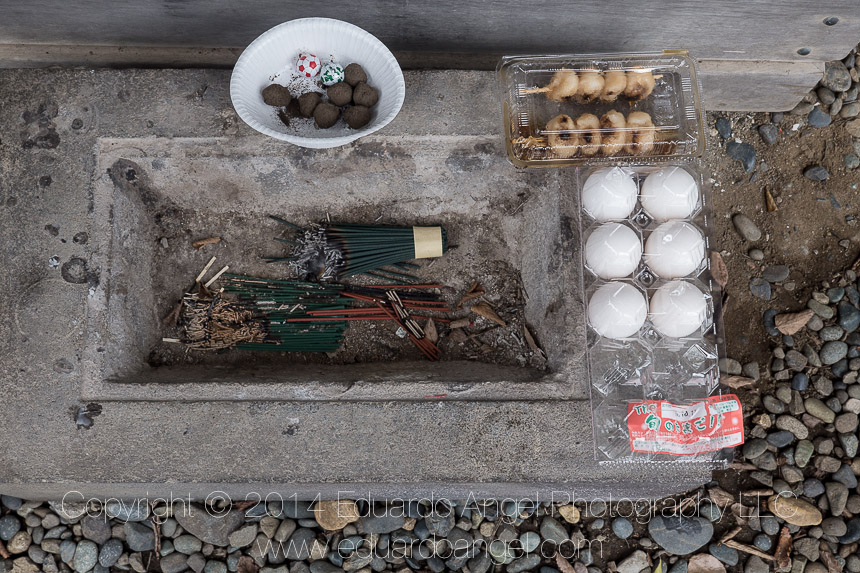
Letting instinct be my guide through Southeast Asia.
Letting instinct be my guide.
I approached my first trip to Southeast Asia in a different manner than my previous international trips. Even though I purchased the airplane tickets back in December, about 10 months before departure, I only booked hotels for the first two nights in each city. I left the remaining nights to chance. Unlike previous trips, I purposely didn’t research, map out, or schedule anything. Every morning I would get lost for a few hours by letting my instinct be my guide. Unlike my hectic life in New York City, where every day and week is carefully planned and literally every minute maximized, I wanted to drastically change gears and slow down, allowing life, and light, to hold my hand and walk me through uncertainty.
As always, I was hunting for meaningful images, beautiful faces, and remarkable locations. While doing that, I was tasting new, affordable, and outstanding food.
As I walked through the cities, I was mentally writing this journal, hoping it would inform and enhance my images. I chose not to shoot more than a few minutes of video during this trip as it would take a more rigorous approach, and it certainly would require more time and gear to do it right. As my only tool I used a tiny Fuji X100S.
The final product is a truly multimedia piece; ambient sounds recorded by us with an H4n, a few video clips, my journal transformed into a voice-over narration, and many photographs, some of which became a book carefully edited and beautifully designed by the super talented Gaia Danieli.
Part 1 (From New York to Tokyo) is now available here.
We truly appreciate your support for this and similar project by purchasing My Asia • Photo eBook (iPad)
The PDF Version is herePDF version is available here, and the printed version from Blurb is here.
Photography
The 3 characteristics of highly successful people.
You’d think it would be easy to find like-minded people in a city like New York, right? Wrong!
Finding talented people is easy. To find reliable people is a different story. Moreover, finding talented AND reliable folks who work well with your company’s culture is a difficult task, to be sure. This is exactly why Zappos offers new hires $2,000 to quit.
Video
2013 Roundup and our favorite Top 10 Lists.
If there’s one thing we love, it’s lists! Here’s a short and sweet compilation of our favorite “Top 10” lists from 2013. (more…)
Photography
Visual Serendipity Week 84. South American Sunset.
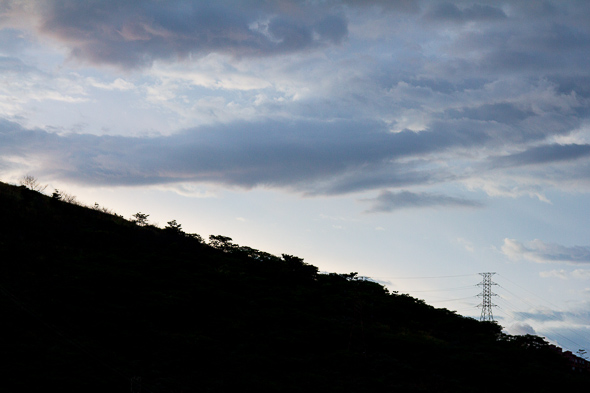
A fairly typical sunset in Cali, Colombia. I’ve always liked the “watercolor” quality of the light and clouds in that city.
Photography
Fuji X100S Hands-on Review.
I’ve put this little thing through every imaginable shooting situation, and tried most, if not all, of its settings, shooting more than 8,200 images on four different assignments in 5 countries in less than a month’s time. And yeah, I know, I’m almost a year late to the Fuji party.
But, as I tell my students who seem to be magnetized to the flatiron building after moving to New York, it doesn’t matter if other people have photographed or written about the same subject that you are interested in. It’s exciting to see how each of us uniquely interprets our surroundings. So, here are my personal impressions of the Fuji X100S.
It is important to mention that I am not being paid by Fuji, or anyone else for that matter, to use the camera or write this review. I’m doing this just as a way to give back to the photo community, so if you are inclined to purchase this system, please consider using our Amazon link. It won’t cost you a penny more, and it would definitely allow us to spend more time working on projects like this:
Why the hype?
The Fuji X100S is a small and light, retro-looking 16MP APC-C magnesium body camera with a fixed 23mm f2.0 lens (equivalent to a 35mm focal length on a 35mm camera) that captures 14-bit RAW. It looks and feels like a Leica M8 or M9, but it comes in at about a fourth of the price.
Size and weight
I was going to spend 26 days working in five Asian countries. With a limited amount of free time to explore on my own, I wanted a camera that would allow me to use any form of transportation (biking with a backpack full of lenses and accessories was not an option), that would capture RAW (a cellphone wouldn’t cut it here), and that was inconspicuous (the Canon 70–200mm f2.8 was out).
So, the main reason I chose this system was weight. Many years ago I was willing to carry two bodies with two lenses and a small daypack with water and accessories (monopod, memory cards, filters, batteries, more lenses, cable releases, etc.). Not anymore. I want to travel as light as possible and be able to fit ALL of my clothes and gear in a carry-on rolling backpack.
When I travel, I break all the rules my mom taught me: I talk to strangers, I eat all kinds of weird food (especially street food), I sleep as little as possible, and I intentionally try to get lost. I enjoy discovering cities on foot, often walking 12 hours in a single day. Deep inside myself, and for some masochistic reason, I also wanted to push the limits of my comfort zone. Not having a set of super-fast zoom lenses with me would be a major restriction—but also a liberation.
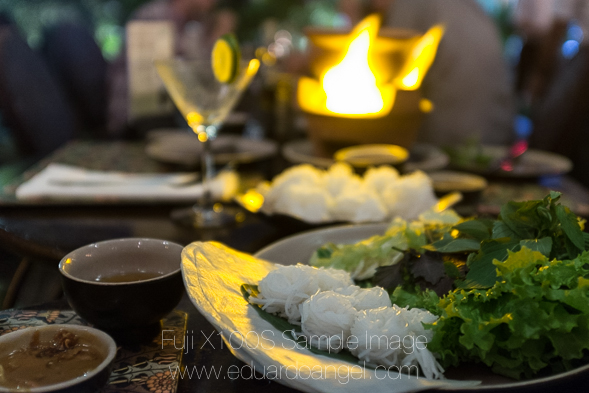
The Macro Mode focuses as close as 3.9″ (10cm). It works great and focusing is fast. Something to keep in mind when using the Macro mode is that if the Optical Viewfinder is on, the camera will switch to the Electronic Viewfinder.
Day 1. First issue.
After years of using Canon and Nikon DSLR systems, I naively assumed that all camera companies were up to date on battery technology. I was terribly mistaken. If there’s one issue with the X100S it is the battery life. Thankfully, and with proper planning, this is something that can be worked out.
The ONE battery I brought with me lasted a couple hundred images. Assuming I had not charged it completely I went through the same issue the following day. Finding digital gear overseas is often difficult, time consuming, and expensive. Locating batteries for this system in northern Thailand was a nightmare.
If you are planning to buy this camera, I’d recommend getting at least a couple of extra batteries. The original Fuji NP-95 is $38, but you can obtain much cheaper ($10) generic batteries, too. The best deal I’ve seen is this Wasabi kit with two batteries, charger, European plug, and car adapter for $20. A no brainer investment.
Why do you need a second charger? Well, it so happens that the Fuji charger does not tell you the percentage of charge that you have. It is either charging (the light on the charger is on) or full (the light goes off). For some reason, if you take a fully charged battery and attach it to the charger, it can take 10–15 minutes to show that it is full. To add insult to injury, it takes 180 minutes (three hours!) for one NP-95 to charge from dead to full. That’s 50% of the time the battery lasts under normal use without the LCD display. Fuji’s battery charger has no folding plug so it requires a long separate cord. One more thing to pack.
The battery issues continue on the camera: the battery-level meter simply goes from normal to dead in a few images. Just like that. Unlike a DSLR, a mirrorless camera sensor is powered up all the time, even if you are just focusing or reviewing images. If you use mostly the optical finder, turn the “OVF power save mode” on. The display’s info will be dimmed a bit, and the live histogram is no longer available, but it will greatly extend the battery life. I strongly recommend reading pages 18, 36, 41, 47, and 91 from the Camera’s Instruction Manual (available here as a PDF).
On paper, the NP-95 is rated for 300 shots per charge. After all these tweaks, I’m getting an average of 450 shots if I switch from EVF to OVF when possible, if I turn the camera off instead of keeping it on standby mode, and if I don’t use the viewfinder.
That’s a lot of ifs! The battery’s design is also poor, as it allows you to insert the batteries incorrectly and still be able to close the “battery-chamber cover.” You will know if you’ve done it wrong because the camera won’t turn on.
Having the battery life improved to a maximum of 450 pictures gives me about five hours, which is about a third of my working day when traveling. The poor battery performance and long charging cycles were by far the biggest drawbacks using this system on the road.
Focus
On several occasions I could not get the AF to lock, even in bright daylight. In low light the AF does hunt and it is slow. I also had a few instances where the camera “back focused” for no apparent reason.
The AF-C Mode (continuous auto focus mode) was extremely unreliable. The camera is simply too slow to track, lock, and capture a moving subject. Additionally, on AF-C Mode you can only focus on the dead center of the sensor. In my opinion, these two issues defeat the purpose of AF-C.
The manual focus works great. I love the focus peaking feature.
I absolutely love the hybrid viewfinder. It took me a couple of days to realize that the little switch on the front of the camera almost magically changes between the optical and electronic viewfinder.
Lens
The fixed 23mm f2 lens is very sharp, and impressively corrected for distortion. In combination with the sensor’s ability to capture noise-free images up to 3,200 ISO this makes shooting under low-light conditions bliss.
Low Light performance.
As you can see, low light performance is impressive. The sensor performs very well up to ISO 3,200 and decently up to 6,400. Relatively long exposures are not an issue.
Dynamic Range – Highlights and Shadows detail.
Another excellent spec; the detail that this tiny sensor can capture is truly remarkable.
Movie Mode
If shooting video is extremely important to you, stop reading this right now and consider another camera. The camera offers Full HD (1920 x 1080) at 30fps or 60fps and a decent 36MBps bit-rate. But, to access the video mode, you have to select “Movie” in the drive mode menu. You can’t use the optical viewfinder. Manual exposure can only be modified before you start recording. The ISO and ND are inaccessible while in video mode. In terms of quality, if you have good light, perfect exposure, don’t care about sound, can pre-focus, and the camera doesn’t move, the footage is decent.
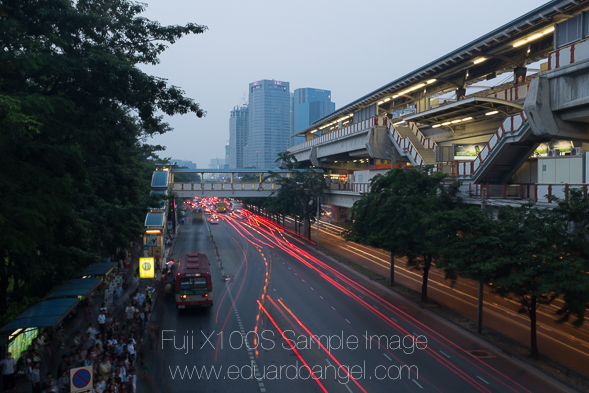
A three-stop neutral density filter is a welcomed feature. Unfortunately, it is not accessible during Movie Mode.
The built-in Panorama works well.
Workflow
I download and back up my images at the end of each day when I’m on the road. I also add key captions (locations, names, etc.) and a few general keywords. I wanted to create Smart Previews and edit them in my “down time” (doctors offices, the DMV, and long flights are ideal locations). That didn’t quite work out. On a two-year-old Mac Book Pro and a fast portable external Hard Drive, Lightroom 5 took on average two-and-a-half hours to import 450 RAW images, convert them to DNG, and build Smart Previews, which I still consider the best feature in Adobe Lightroom 5.
So, every night, after a day of working and lots of walking, I’d download the cards through Lightroom and charge the batteries, take a shower, grab something to eat, call my wife, return emails and phone calls, plan the following day, and…continue to wait because neither Lightroom nor the battery were ready.
Future enhancements
• I wish the camera had built-in GPS, which in combination with Lightroom’s Maps Module would make captioning images MUCH easier. My poor-man’s workaround is to simultaneously snap a picture with my cellphone at key locations. Since the phone adds the GPS information to the image I can later copy and paste the GPS coordinates to the relevant RAW and video files. Nothing fancy, but it works.
• It takes an annoying “long press” of the shutter button to wake up the camera from stand-by mode.
• If you’re shooting in burst mode, you can’t review individual images or zoom in/out. The images play back in a pointless slideshow. This was truly frustrating, as you can’t know if you got the desired image until you download the files.
Final thoughts
One day, many moons ago, as a student shooting for a newspaper, the photo editor asked me if I had more than one lens. I proudly answered, “Yes, I have three!” To which he replied, “Then use them! All your pictures look the same.”
That was a serious concern I had about spending a month with a single fixed wide-angle lens. I’m glad to report that the advantages in quality and weight greatly outperform this challenge.
Is this camera going to help me take better pictures?
Cameras are tools, no different from hammers or toasters, when you get down to it. I own very little gear because I prefer to rent the best tool for each job. That way I keep my overhead low and have access to the latest technologies.
That being said, after a few days getting used to the cluttered and somewhat illogical Camera Menu, I felt like shooting with my first Nikon FE-2, except now I had more than 36 frames and could switch the ISO as I pleased. There was, and is, an inexplicable emotional connection with the X100S—a feeling that I haven’t felt in a decade. Technically speaking, the camera is wonderful. But, there’s more to it. I can and want to take it with me everywhere I go. I have been taking more “snapshots” than ever before. I can get closer to my subjects, and shoot silently and almost invisibly.
If you have been drooling over this camera and are ready to pull the trigger, I hope this review provides that extra little push. It’s OK, go ahead and make the jump! You can tell your spouse that it was my fault. Please consider using our Amazon link. It won’t cost you a penny more, and it would definitively help support this site.
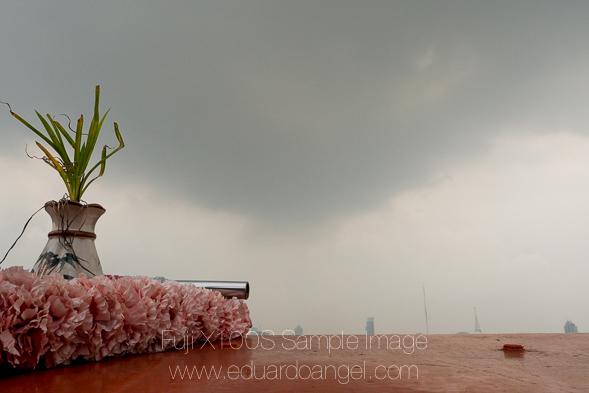
Feel free to leave your comments at the bottom of this page. Also, be sure to join me on Twitter and Facebook, and subscribe to our complementary Monthly Newsletter and our RSS feed.
Photography
Visual Serendipity. Week 77. David’s Loft and Nokia.
Manhattan’s skyline as seen from David Alan Harvey‘s loft in Brooklyn. Shot with the Nokia Lumia 1020, a 41-megapixel camera phone. Disclaimer: I don’t own this phone, Nokia gave me one to test drive for a week. I’ll be sharing my thoughts on a future post.
Video
Thoughts on getting started in Filmmaking.
As I’m packing my gear for a four-day sunrise-to-sunset video shoot I realize that I really enjoy filmmaking. There’s so much to learn, watch, read, and improve upon.
Photographers making the transition into video shouldn’t be daunted. I think that video is something that is really good for us as photographers, as it is just another tool that we have at our disposal. Instead of being afraid and thinking that there is something else you need to learn, you should embrace this. Video is not going away!
A few random thoughts:
• Let’s start with a “simple” question I get all the time that’s potentially difficult to answer: what makes a good video? Basic elements of photography, for sure. Interesting subjects, definitely. And good light. And clean sound. And a great story, which often means a tight script.
• When starting out (and pretty much all the time, really) it is important to team up with a good editor. If you are a photographer, and single, do your best to date or marry an editor!
• When we are shooting stills, we are looking to freeze time, to capture the essence of a moment. With motion, we are looking for a lot of other things besides framing and exposure. We are thinking about movement, continuity, angles, and how we are going to connect everything in post. It takes a very different mindset.
• Using very shallow depths of field as a creative element sounds amazing. In reality when the camera moves and the subject moves and you have two inches of focus, then it is not that amazing.
• A 21-megapixel-full-frame-sensor size is 5600×3700 pixels, but that’s for stills. When you are shooting video, you are really only getting a fraction of that. HD, which is 1920×1080, is two only 2 megapixels. Yeah, I know, do the math. But, we are shooting 2 megapixels 24 or 30 or even 60 times per second. That is a lot of information, which means more memory cards, longer download times, and more runs to the store to get additional hard drives.
Be brave…this is just the tip of the iceberg. In upcoming articles I’ll flesh out details like achieving the ideal setup, the nuts and bolts of shooting quick interviews, and crucial elements you want to be sure to get right before the shoot.

Video
Cooking and Filmmaking.
Very early this morning, on my way to the SIXTH video shoot in seven days, I realized how similar are two of my favorite things in life: cooking and filmmaking. Let me explain.
Photography
Visual Serendipity. Life’s cycle.
My grandfather and my nephew holding hands. 80 years apart; one life ends and another one begins. (more…)
News
Putting the “Zen” in Kaizen.

You might have noticed that the official name of this blog is “Kaizen.”
“Kaizen” is a Japanese business philosophy of “continuous improvement of working practices, and personal efficiency.” We deeply believe in this philosophy and do our best to apply it in our daily business and personal lives. (more…)
Video
The Future of Storytelling is Transmedia.
What is the future of storytelling? We’ll begin our day with a story on our phone. On our subway ride to work a new character will be added to the story and we’ll learn all about him on a tablet computer. At lunch we’ll catch up with the character’s newest adventure on our office computer via Facebook. Later in the day the story takes an unexpected turn—and we’ll learn about it from a digital billboard. Before going to bed we’ll plant the seeds for tomorrow’s developments while playing a video game on our television. This is transmedia—the future of storytelling. (more…)
Photography
Visual Serendipity.

Shot and retouched on Google’s Nexus 4 Phone.
Video
15 Valuable Lessons Learned on Movie Sets.
For a while I’ve wanted to share some small (but valuable) lessons I’ve learned while working on movie sets. The following list is in no particular order; however, I will say that the first item of business in any shoot should be deciding where the camera should be placed. Everything else follows this decision.
• There’s cable wrangling and data wrangling, and as hierarchy goes, there’s a big difference between the two.
• The digital imaging technician (DIT) does a lot more than just data wrangling. He needs a deep knowledge of cameras, color, RAW workflows, monitors, backup strategies, etc.
(more…)
Video
Shooting with the Panasonic Lumix DMC-GH3. Field report and impressions.
The friendly waiter at the Turkish restaurant in Sohar, Oman, saw the camera on the table and asked “Nikon? Canon? Which one is better?” To which I replied, “actually, this is the Panasonic GH3.” He stared at me, his expression turned from excited to perplexed to confused to annoyed within seconds. After an uncomfortable silence he finally asked, “Are you ready to order?”
That was pretty much my reaction when, a few weeks ago, just two days before I started teaching a “Digital Cinema for Photographers” event in Dubai, I found out that Panasonic, a major sponsor of the event, REALLY wanted me and my students to use a couple of GH3s and several lenses in my hands-on workshop.
Panasonic is one of the largest consumer electronics companies, and the GH3 is the third generation of their very successful Micro Fourth Thirds DSLM (Digital Single Lens Mirrorless) system. For a while I have been aware of the low-budget-filmmaking community’s devotion to the hacked DMC-GH2 and its ALL-I codec. I saw the DMC-GH3 at Photokina last year, but I had never before shot a single frame with a Panasonic camera. The bodies that I was given were running Firmware v0.5. Add to this a nine-hour time zone difference and jet lag, and you can begin to imagine my pain.
While I’ll be using some geeky terms, this is not an in-depth technical review, nor a scientific analysis of the GH3. You can dig into tech specs and MTF charts somewhere else. My goal is simply to share my honest and independent impressions, go over the things I liked and didn’t like, and communicate my wish list for future features. I want to emphasize that all the conclusions in this article are subjective and strictly based on my own personal experience.
“I have to warn you, I’ve heard relationships based on intense experiences never work.”
-Keanu Reeves in “Speed”
I have to respectfully disagree with Keanu on this one. Much to my surprise, the camera was much more intuitive than Sony’s NEX system, and several video features got my full attention right away.
FEATURES
• Full HD 1920×1080 60p/50p (NTSC/PAL) with 30p/25p/24p options.
• Ultra-high bit rate video recorded at 72 Mbps (ALL-I) or 50 Mbps (IPB).
• Capable of recording continuously for an unlimited time for NTSC and 29 min 59 sec for PAL.
• Native support for MOV (h.264), MP4, and AVCHD formats.
• Time Code support in the MOV and AVCHD formats.
• Extremely fast and accurate contrast-detection Autofocus.
• A 3.5mm mic input AND a headphone jack AND the option to manually adjust the sound recording levels via touchscreen controls.
• Full-time AF, AF Tracking, and Face Recognition AF are available for VIDEO. The Touch AF mimics rack focusing.
THE WORKSHOP STORY
Not having enough time to field test the Panasonic systems before the Workshop, I shot dummy clips in my hotel room and made sure that the footage would work in Adobe Premiere Pro CS6. The test went surprisingly smoothly. I then set both GH3 cameras to the same video settings: MOV at 1920×1080, 24p, 72 Mbps ALL-I, Standard Photo Style, White Balance at 5500K, got ND filters for all the lenses, extra batteries, and a few Class 10 SD cards. And then I prayed.
Note: It’s extremely important to point out that full HD on this camera requires memory cards with the fastest speed available. My “older” memory cards didn’t work, giving me only four seconds of recording time.
VIDEO
We spent the first day of my three-day Digital Cinema Workshop covering all the technical similarities and differences between stills and video. On the second day, we planned a location shoot with a Capoeira team and spent a couple hours shooting in the afternoon. On the third and last day we covered the different hardware and software requirements for post production and spent three hours editing the footage. I am especially proud of the short clip my students put together in such a limited amount of time and with newly acquired knowledge (and using brand new gear!).
Capoeira in Dubai. Student Project. from Eduardo Angel on Vimeo.
We could obviously use a few more days sweetening the audio, fine tuning transitions, and grading, but for a two-hour shoot and a three-hour edit, I believe this is a good example of what can be accomplished with great teamwork, interesting subjects, and the GH3’s many customizable options.
SAMPLE CLIPS
Below you will see a few additional sample clips, all shot as H.264, 1920 x 1080, 23.976 72Mbps ALL-I, using the GH3’s “Standard” profile (Contrats = 0, Sharpness = 0, Saturation = 0, Noise Reduction = 0). The Exposure and White Balance were set manually. The lens was the Lumix GX Vario 12-35mm F2.8 set on AF Tracking mode, which worked very well most of the time. Despite the lens having “environmental sealing,” as you can see the fine desert’s sand inevitably found its way to the sensor. I put the clips together on Adobe Premiere Pro CS6, and have NOT done any grading nor sharpening. These short clips are intended to show you what the GH3 is capable of, not to tell a specific story.
SOMETHING INTERESTING
So, mission accomplished, right? Not so fast. A couple of days later, as I was wrapping up my day, a friend asked “Are you busy? I wanna show you something interesting.” With only the GH3, the 12-35mm 2.8 lens, a 4GB card and a low battery I jumped into his car. The “something interesting” happened to be access to the Royal Suite at the 7-star Hotel Burj Al Arab—a notoriously difficult area to access. With limited amount of storage space and battery life I managed to capture a few keepers.
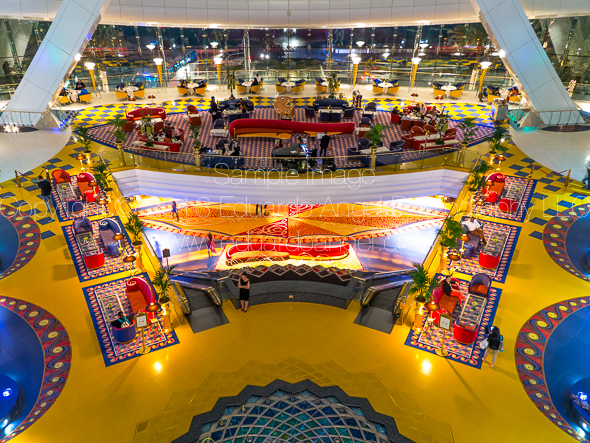
The 7-star Burj Al Arab hotel resembles a giant sail rising over the Gulf, with changing colors visible for miles at night.
The very next morning (on my “day off”), I headed out to meet an old friend for brunch at the Atlantis. Should you ever find yourself in this neck of the woods, I strongly recommend that you pay the Atlantis a visit. As we enjoyed the seemingly endless food, my friend received a call to drive to Abu Dhabi right away to pick someone up and then drive back to Dubai. Would I like to come? Guess what I had hanging on my shoulder? This time I had a full battery and a 16GB card, but nothing else to shoot the magnificent mosque and the impossibly opulent Emirates Palace. Once again, the GH3 did a fantastic job.
MORE FEATURES
These are some of the GH3’s features that are not obvious to the naked eye, but are interesting once you are aware of them:
• A magnesium alloy camera body that Panasonic describes as “splash proof and dust proof.”
• The Panasonic RAW files (RW2) work fine in Adobe Lightroom [add link to LR workshop] but the most current version (4.3 as of this writing) is needed. Unfortunately there are no Panasonic lens profiles available as of this writing.
• All the video formats worked seamlessly on Adobe Premiere Pro CS6. Even the video recorded at 72 Mbps was easy to preview and edit on a two-year old MacBook Pro (with 8GB of RAM and an external 7200 RPM Hard Drive as a Scratch Disk).
• HDMI monitor output can be sent with or without information overlays.
• I had a DMW-MS2 Stereo Shotgun Mic with me, but was happy to learn that the camera’s built-in internal microphones provide stereo audio.
• The GH3’s sensor has a 4:3 aspect ratio.
• Built-in Time Lapse, and HDR but unfortunately it works only for JPGs not RAW.
• Five physical function buttons, and two touch-screen function buttons, all customizable with close to 40 options to choose from.
• Virtually all the key shooting controls are within the right hand’s reach. This frees up the left hand to hold the camera or focus manually.
• Excellent battery life, lasting a full day under normal operation. For extended video sessions I’d consider getting the DMW-BGGH3 Battery Grip.
• Apparently (I have not tested this) the GH3 is also capable of real-time image output to the LVF or the rear monitor AND to an external monitor via HDMI.
LENSES
I shot extensively (more than 2,000 images in 18 days) with the Lumix GX Vario 12-35mm F2.8. The lens is tiny. And fast. And awesome. It has the equivalent focal length to a 24-70mm F2.8 on a 35mm system but it is a fraction of the size and weight. As you already know, this is a very good start when dealing with packing issues.
In terms of depth of field, the lens behaves like a 16-45mm F3.5 lens on an APS-C sensor, or a 24-70mm F5.6 lens on a Full Frame sensor. It is hard to get used to this, especially when shooting another system simultaneously, but it is not a disadvantage per se.
Click to keep reading (more…)
Video
Traveling with photography and video equipment. Technical and Practical Tips.
These are some travel tips I’ve learned over 20 years of traveling with photo equipment. Most of the recommendations below will be most helpful for photographers shooting video.
• Format all your memory cards on the specific system you are planning to use them with (7D vs. 60D vs. H4N).
• Change and charge all your batteries before leaving.
• Test all your devices.
• Test that the software on your laptop is working. Trying to update the OS, an Adobe application, or plugins from an airport lounge or hotel’s WiFi is NOT fun.
• Match memory cards. The 7D takes CF cards and the 60D takes SD cards. Use the same capacity (32GB cards or 16GB) for each system at the same time. It will make your asset management on location much easier.
• Bring enough additional storage. Photographers tend to underestimate the size of video files. I can easily shoot more than 100GB in a day. And you will need a backup. Twelve minutes of video take approximately 4GB of space. With two cameras we then have 8GB. With a backup we now have 16GB for the same 12 minutes of footage.
• I recommend G-Tech hard drives. The G-Technology G-DRIVE Mini 500GB is an excellent product. Make sure your external hard drive is 7200 RPM (as opposed to 5400). It will make editing video much faster.
• Buy only hard drives with multiple Interfaces (USB 2.0, FireWire 400, FireWire 800). When (not if) your one and only USB port breaks, you won’t be able to retrieve your information.
• Bring a backup of all the essential items. My list includes: reading glasses, camera, lenses, memory cards, hard drives, chargers, card readers, all cables, and quick release plates.
• Use TSA-approved locks. I preferred padlocks and use the same combination on all of them.
• Simplify. I purchased my specific Android tablet because it matched the power adapter for my phone. And both can be charged via USB using the card reader cable, which is the same as Canon’s camera cable!
• Simplify some more. Bring a multi-card reader. I can simultaneously download the 7D’s CF Card and the 60D’s SD Card using the same reader and the H4N’s SD card using the laptop’s built-in SD card slot.
• Simply even more: One of the reasons why I purchased the 60D as my B camera is because it uses the same batteries/charger as my 7D. I also liked the fact that it uses DIFFERENT memory cards, so it is much easier to keep track what was shot with what.
• Before you leave, check the electrical plug/outlet and voltage information at your destination. Oman and the United Arab Emirates seem to use three kinds.
• Test your workflow. It goes without saying, but never bring new equipment to a shoot, especially overseas. Make sure your files work well with your software and that your cards work well with your cameras.
• If you are capturing Full HD video (1080p) you shouldn’t be using older/slower memory cards, otherwise you might experience dropouts and stuttering. Been there, done that. Not a good day.
• Don’t forget your business cards! The more the better.
If you’re nervous about upgrading gear or making the leap to HDSLR cinema we can help. Book a virtual one-on-one consulting session today!
Video
What to bring and how to pack when shooting overseas.
For a limited time, Tenba is offering a 10% off ANY item on their website using the Code: EduardoAngel
—
I have always been fascinated with bags and how photographers pack their gear. I remember reading the equipment lists of National Geographic photographers when I was younger. I used to wonder how they moved around the world with so much stuff.
Those times, as you might have noticed, are over. Nowadays, we need to deal with increasingly tighter airline safety, weight, and size regulations.
We have covered the “essential” video gear on previous posts. However, when it comes to deciding what to bring on a trip as carry on, what to check, and what to leave behind, the theory becomes much more interesting.
I tend to start with the personal stuff. Medicines, pain killers, toiletries, travel documents, etc. Some of these items are not easily replaceable; some are, but it would be inconvenient to forget them (think passport, credit cards, or headphones).
Disclaimer: The images below are taken with my phone, simply to illustrate this article. They are not intended to be fine art masterpieces of any kind. And yes, the “background” is my bed.
This is my “rolling studio” when shooting on location in New York. Add a fluid head tripod, monopod, three hot lights, umbrellas, cables and light stands. It is a lot, but two people can easily carry everything even on public transportation.
Click to keep reading (more…)
Video
Blogging With Video, Hoping to Go Viral. Really?
Ay ay ay! I might have more than a few issues with this New York Times article “Blogging With Video, Hoping to Go Viral.”
“You want to have a decent camera. A hand-held video camera is nice and offers more features and flexibility, but your smartphone is fine… The only additional equipment you might consider is a separate lavaliere or lapel microphone. And if there isn’t enough ambient light to illuminate your face, spring for a clamp lamp that you can find at most hardware stores… “
Here’s the complete article.
Is “good enough,” good enough? What’s your take?
Video
Visual Serendipity. Family Dinner Wes Anderson Style.
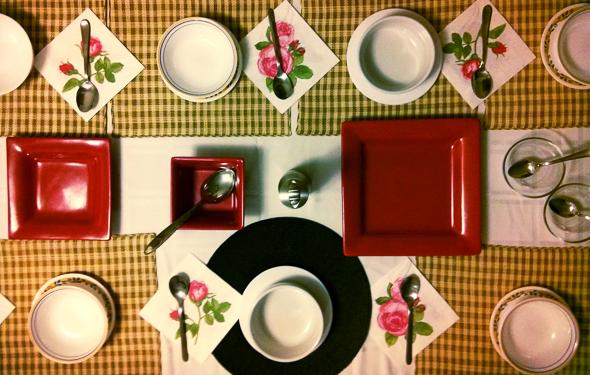
Family dinner at home. Shot with my brand new and awesome Google Nexus 4.
Photography
Visual Serendipity.
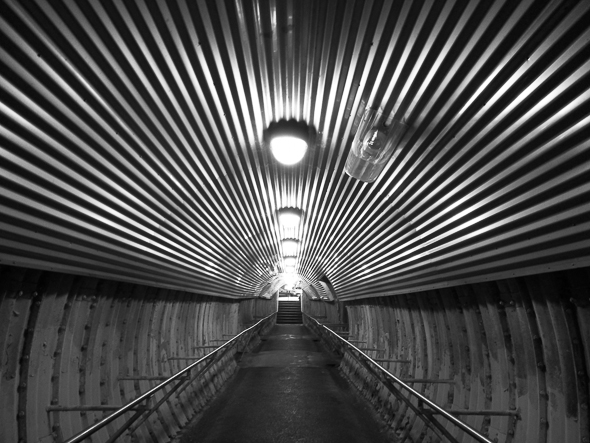
Even the North White Plains Metro North station has a Wikipedia page! This is the view from the South tunnel, while running to catch my train. Visual Serendipity is our weekly series of images captured on an Android Nexus 4 smartphone.
Photography
Visual Serendipity.

The invisible workers, the urban ghosts. We rely on so many people to get cheap food, services and goods, but we rarely acknowledge them, thank them or even see them. Let’s change that this year.
Video
Our 10 hidden gems of 2012.
Earlier this week we shared with you our “Crème de la Crème” of 2012, the 10 most visited articles on this site. Today, we would like to share 10 more articles that we feel should have made our top ten list. As a team of educators, technology consultants, and visual storytellers, we are very proud of these posts as we feel that they are extremely relevant and worth your time. We encourage you to read them, share them with those who might be interested, and respond by starting a conversation below.
Without further ado here they are:
1) How to fix a broken education system. My thoughts.
We believe young students should be learning flexibility, teamwork, accounting, time management, project management, and languages (especially Spanish and Chinese), to be prepared for the future job markets.
Fixing a broken education system.
2) Notes from the Field.
Check out my personal notes and pre-production techniques for photographers and filmmakers.
3) Same, but different: An Intro to Digital Cinema.
We explained the 5 main similarities, and 5 main differences between shooting stills and shooting motion.
Click here to keep reading (more…)
Video
The Crème de la Crème: The best articles of 2012.
Wow! What a year! We completed 200 Consulting projects, over 30 Photography and Video Workshops, 50 videos, 50 tutorials and close to 200 blogs posts….all in one year.
How was this even possible? One, this is a team effort, where everybody does what they love and excel at. Second, great time and project management, which is paramount in an industry that keeps changing (and sometime evolving) every single day.
We want to sincerely thank our subscribers (if you are not one, it is not too late. Join here) and followers for all of their continued support and feedback.
Today we would like to highlight our 10 most popular articles of the year. Later this week we will publish the 10 articles that for whatever reason didn’t get much attention but we feel are very relevant and worth your time.
Here we go!
1) Upgrading to Adobe Lightroom 4 in 7 simple steps.
No matter what previous version of Adobe Lightroom you use, it is very easy to install and upgrade to the latest Lightroom 4 platform. Find out how easy this is below.

2) Canon EOS M Hands-on Review and Canon EOS M Images.
After several tests, we discussed the best and not so great features of Canon’s EOS M. Also, we shot some sample images with this mirrorless gem.
Canon EOS M Review & Canon EOS M Images
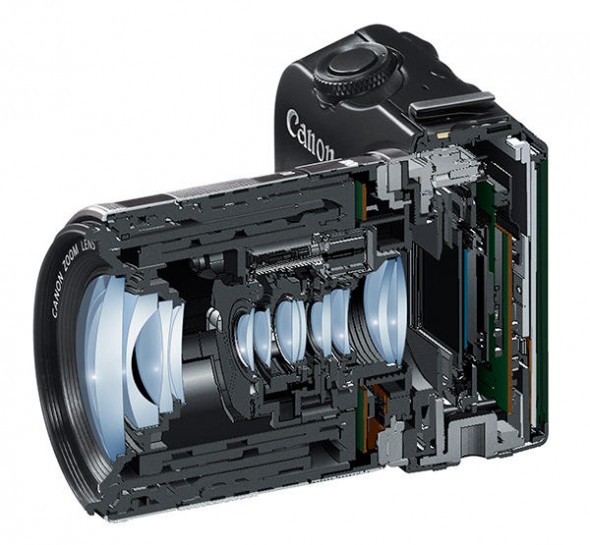
3) Canon EOS Mark III, 5D3, 5D Mk III has arrived!
An in-depth technical analysis on the latest, newest, meanest Canon EOS system. Our overview included the most important and newest features.

(more…)
Video
How do you envision your Day One?
All of us have (or will) experienced a time when we have to plan for retirement, but have you really stopped to think about what you will do on that very first day? That’s exactly what Prudential’s brilliant and beautiful “Day One” campaign is about.
Mapping out the next stage of your life after a long working career should be a fascinating journey, not the struggle and fearful “task” we currently experience. The campaign was targeted at the more than 10,000 American baby boomers who retire each day, capturing what it feels like to wake up on a person’s first day of retirement. The project is hosted on a microsite dayonestories.com, where more than 250 retirees have participated by submitting their images and videos.
The “Day One” campaign was awarded a Gold Integrated Lion at the 2012 Cannes Lions, a very prestigious achievement that only two campaigns in the entire world received. We are very impressed from the quality and effort of this campaign, as they are producing amazing short videos that are truly relevant to everyone.
Click to keep reading (more…)
News
Dare to think for yourself? Join a forum.
Online forums, the ultimate demonstration of democracy and freedom of opinion. As the wise Voltaire said: “Dare to think for yourself.” I also like Benjamin Franklin’s famous quote: “If everyone is thinking alike, then no one is thinking.”
Photography
Fresh Images. Europe.
These are some of my favorite images from a trip to Europe a few weeks ago. Even though I was overseas for almost three weeks, I only had about four days (or 96 hours) to shoot for fun. I’m working on a more elaborate project for these images. For now, check this PhotoShelter slideshow.
Video
Looking for inspiration? Find a Mutoscope.
After three jam-packed weeks attending Photokina, the Glimpse Conference, Cloudforce, and PhotoPlus Expo, I have something to confess: the most interesting and inspiring gadget/technology/trend I saw was NOT Samsung’s innovative Galaxy Camera, Fuji’s slick X-E1, Blackmagic’s Cinema Camera or a new powerful software application.
It was a Mutoscope I saw at Frankfurt’s Film Museum. “A what?” you may ask.
The Mutoscope, an early motion picture device, was patented by Herman Casler in 1894. Cheaper and simpler than Edison’s Kinetoscope, it did NOT project on a screen, and it provided viewing to only one person at a time. The system was marketed by the American Mutoscope Company and quickly dominated the coin-in-the-slot “peep-show” business.
I am in love with the simplicity of this device, the way the viewer interacts with the story by using a hand crank. And story is what really matters. In under 60 seconds (the “movie” starts below at 00:34) we get to see a “crazy wheel” running free through a small town, and the villagers trying to catch it. See, this is about storytelling, not technology. It’s not about sensor size, firmware updates, bigger-is-better, or faster-is-better. It is about the story, something I feel we have been loosing at an ever-increasing speed. If you are looking for some inspiration or motivation, look no further.
Events like hurricane Sandy make us revalue some of our priorities, the real significance of things we often take for granted, like running water, electricity, and true friends. In a similar way the Mutoscope hit a nerve. For some strange reason, the idea of producing something simply for fun or pleasure is becoming obsolete. We should, and we will, go back to the basics. Work harder on telling more engaging stories, developing new angles, communicating better ideas and asking deeper questions. Technology is great, but it is not the be-all and end-all that most photographers assume it to be. I’m sure some of you feel the same way. Want even more inspiration? Check this out.
Photography
Visual Serendipity.
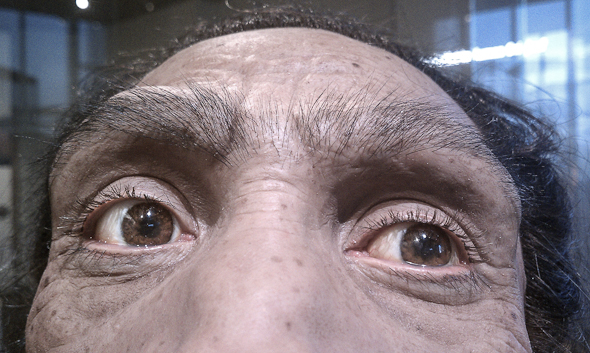
Meet the Homo Neanderthalensis, an extinct human species living during the late Pleistocene Epoch throughout most of Europe and parts of Asia and northern Africa and associated with Middle Paleolithic tools. The image was taken at the one of the current impressive exhibitions at the Smithsonian National Museum of Natural History in Washington, D.C.
You can read more about the Neanderthal culture here.
Photography
Visual Serendipity.
The 1964 World’s Fair New York State Pavilion designed by Philip Johnson is simply awesome. It “featured three observation towers, one of which at 226 feet, was the tallest structure at the Fair. Speedy “Sky Streak” capsule elevators whisked visitors to the observation platform above. Beneath the towers was the Tent of Tomorrow, the world’s biggest suspension roof (larger than a football field), supported by sixteen 100 foot columns. Translucent colored panels in the roof flooded the tent’s interior with colors.” Sources here and here.
We normally don’t use other images on our Visual Serendipity series but these two are too good to skip.
